Slănic Salt Mine
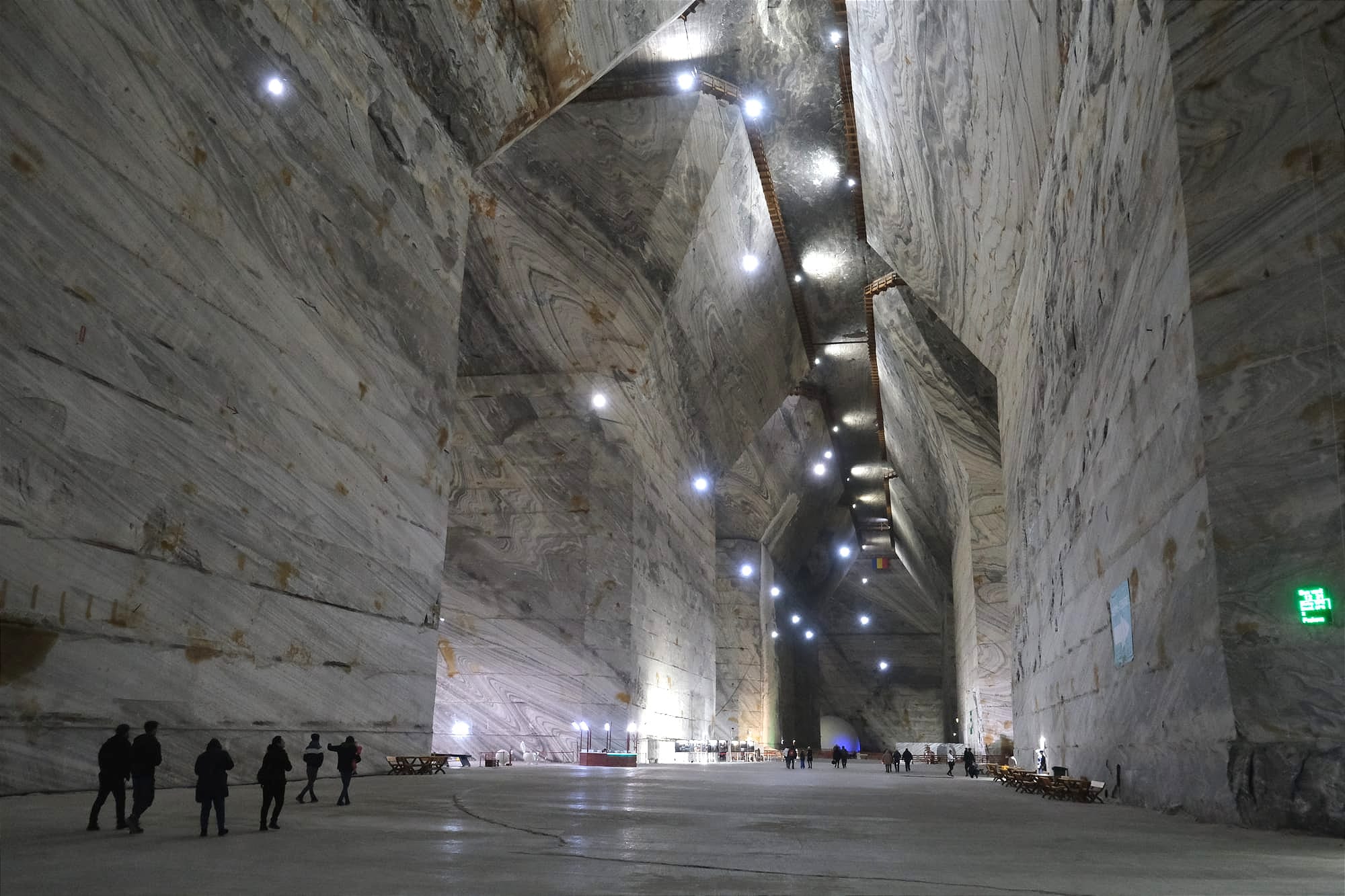
I found out about the salt mine at the town of Slănic by accident. I had been researching a different destination when I came across an add for a tour to this salt mine in Romania. I quickly googled this mine and when I saw the pictures online I knew I had to go. I found out that Slănic is a spa town deep in the countryside of Romania, with salt mines and salt lakes. It is about 100 kilometers north of Bucharest and I was able to get train tickets on the regional carrier. The trip was two and a half hours one way so I figured I could visit the mine in a day.
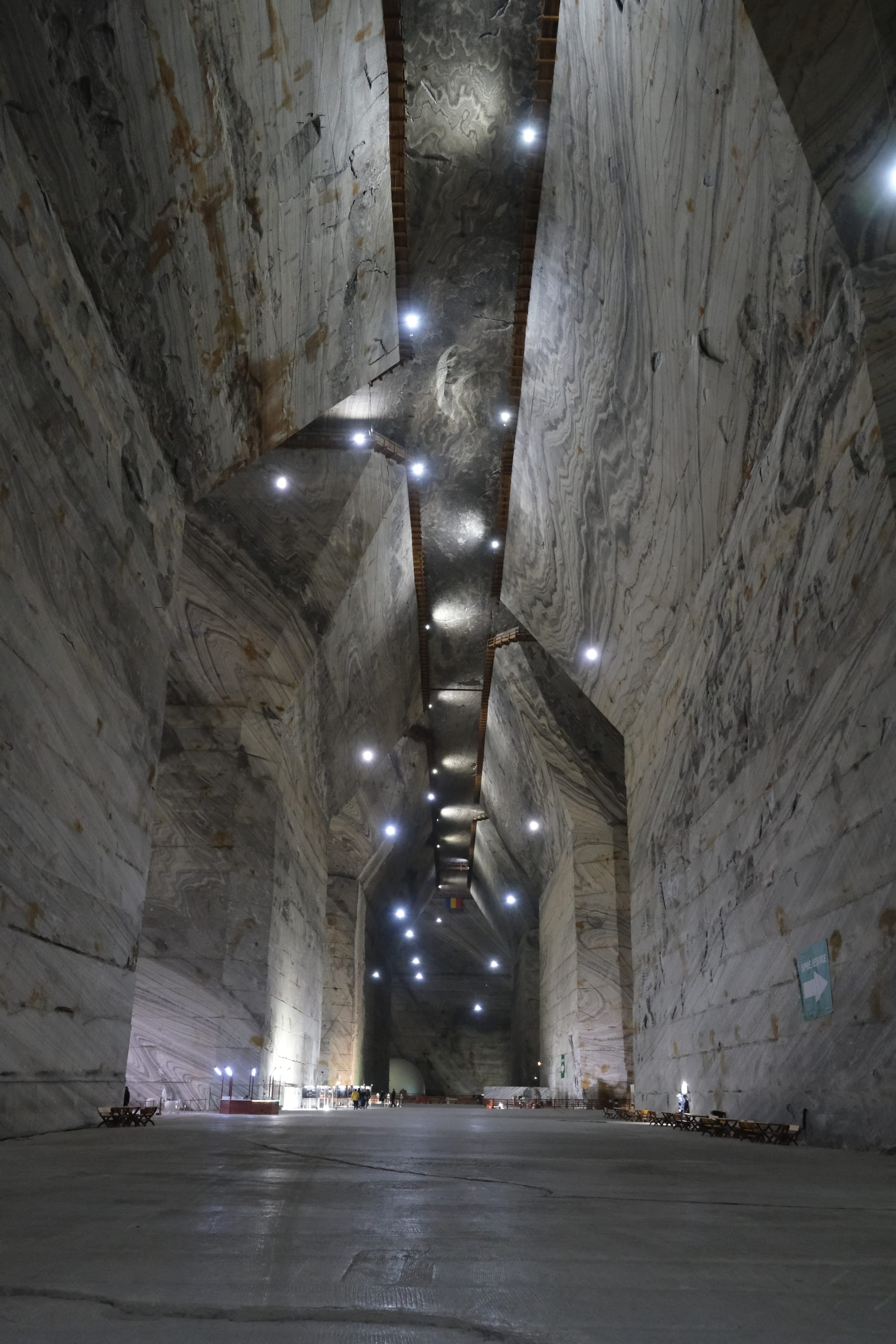
This was the view I had when I first entered the mine. This chamber is absolutely massive, it is 54 meters high and 32 meters wide at the floor. The mine is 200 meters beneath the surface and always has a constant temperature of 12 degrees Celsius.
There wasn't much information online about visiting the mine, and some of it contradicted each other. Some websites said that there was a lift to get down, others that there was a shuttle van. So when I arrived at Slănic I just went to the ticket booth and hoped for the best. After buying my ticket, I waited five minutes or so before a van came and we were driven to a long winding tunnel that went down, deep underground.
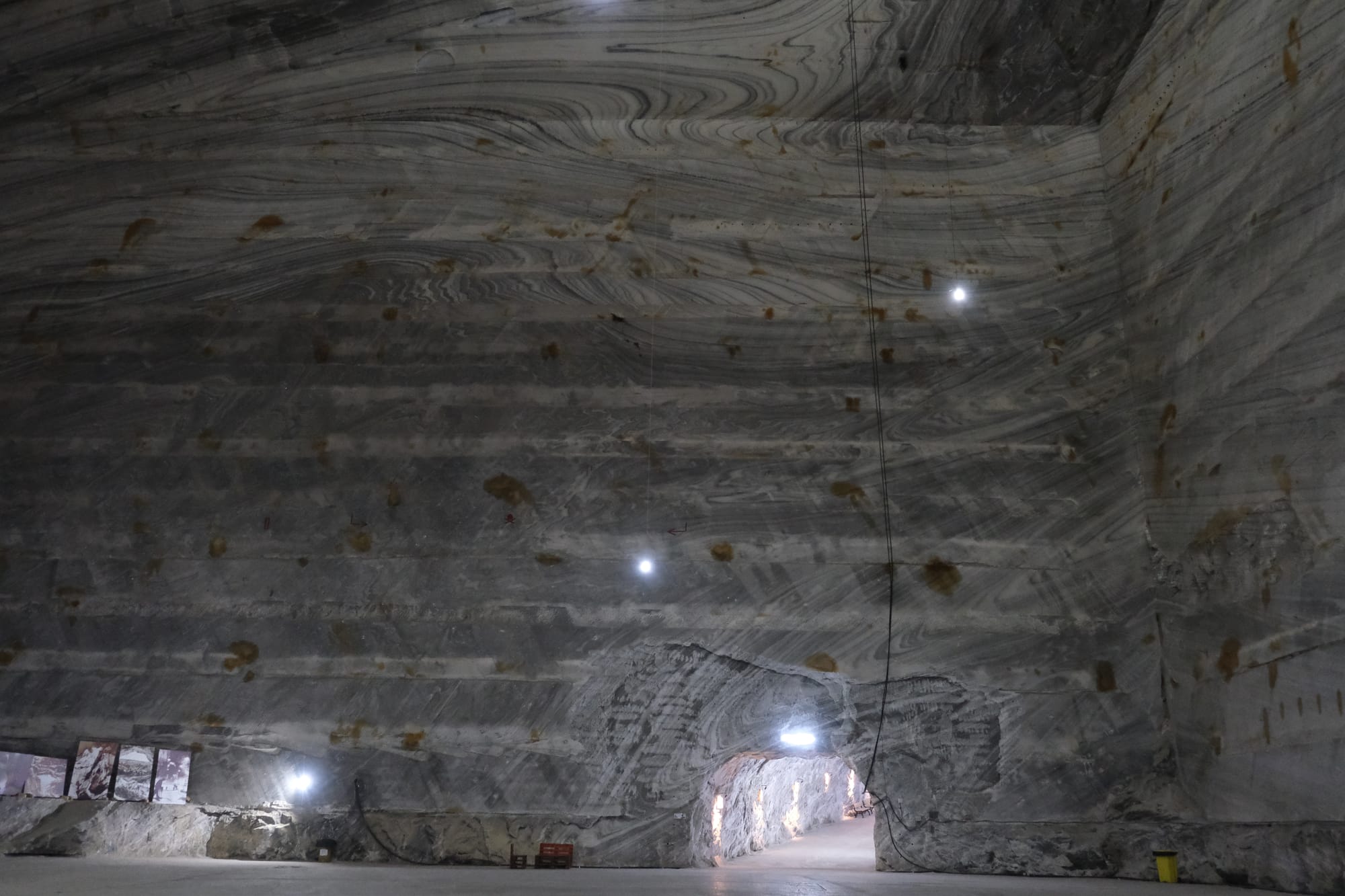
This tunnel was the entrance and the exit into the mine. That entry way connects to a waiting area where the van drops off visitors and picks up those wishing to leave. The tunnel is large enough for a van to drive through, so here I wanted to show how small the tunnel seems compared to the huge wall of the main chamber.
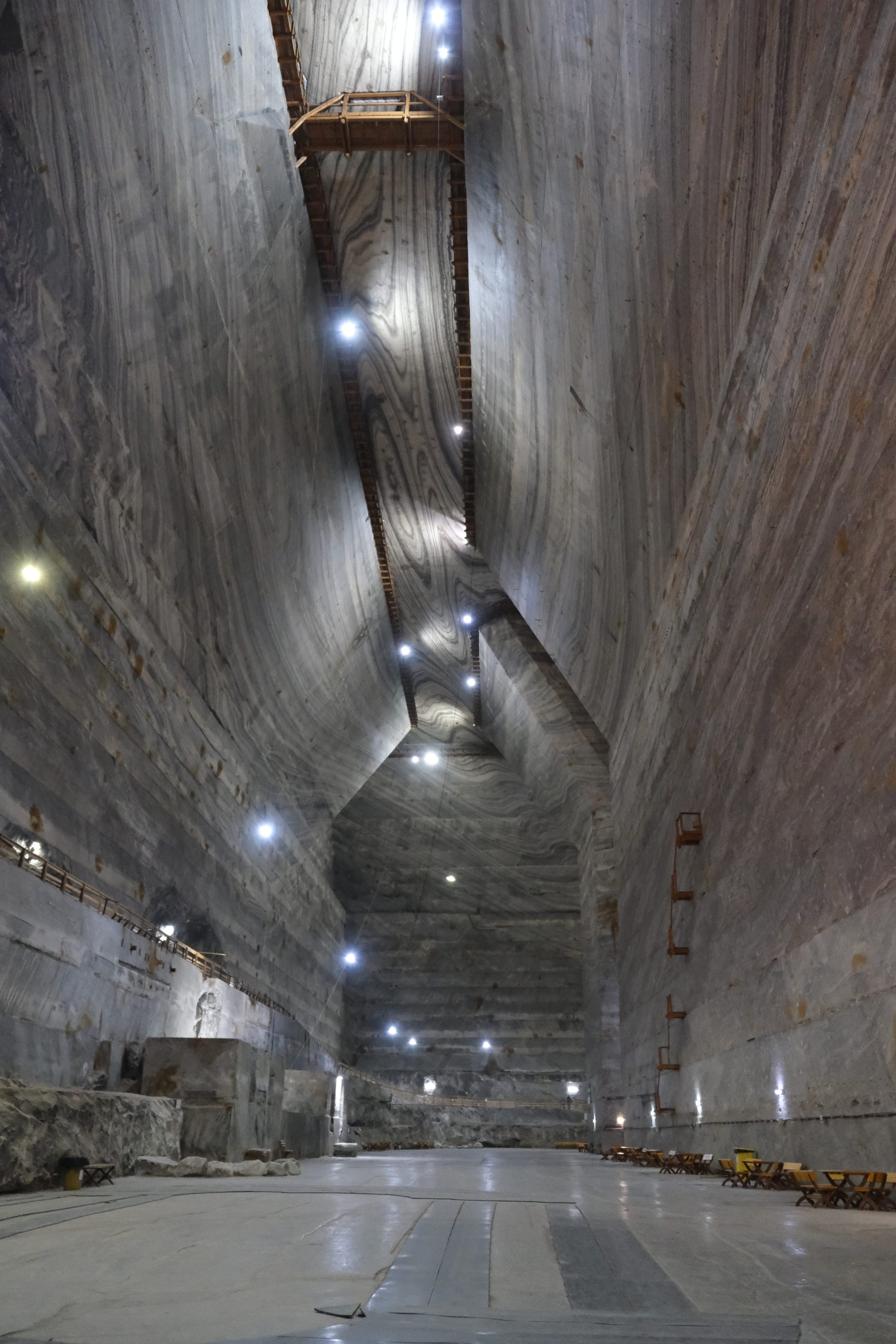
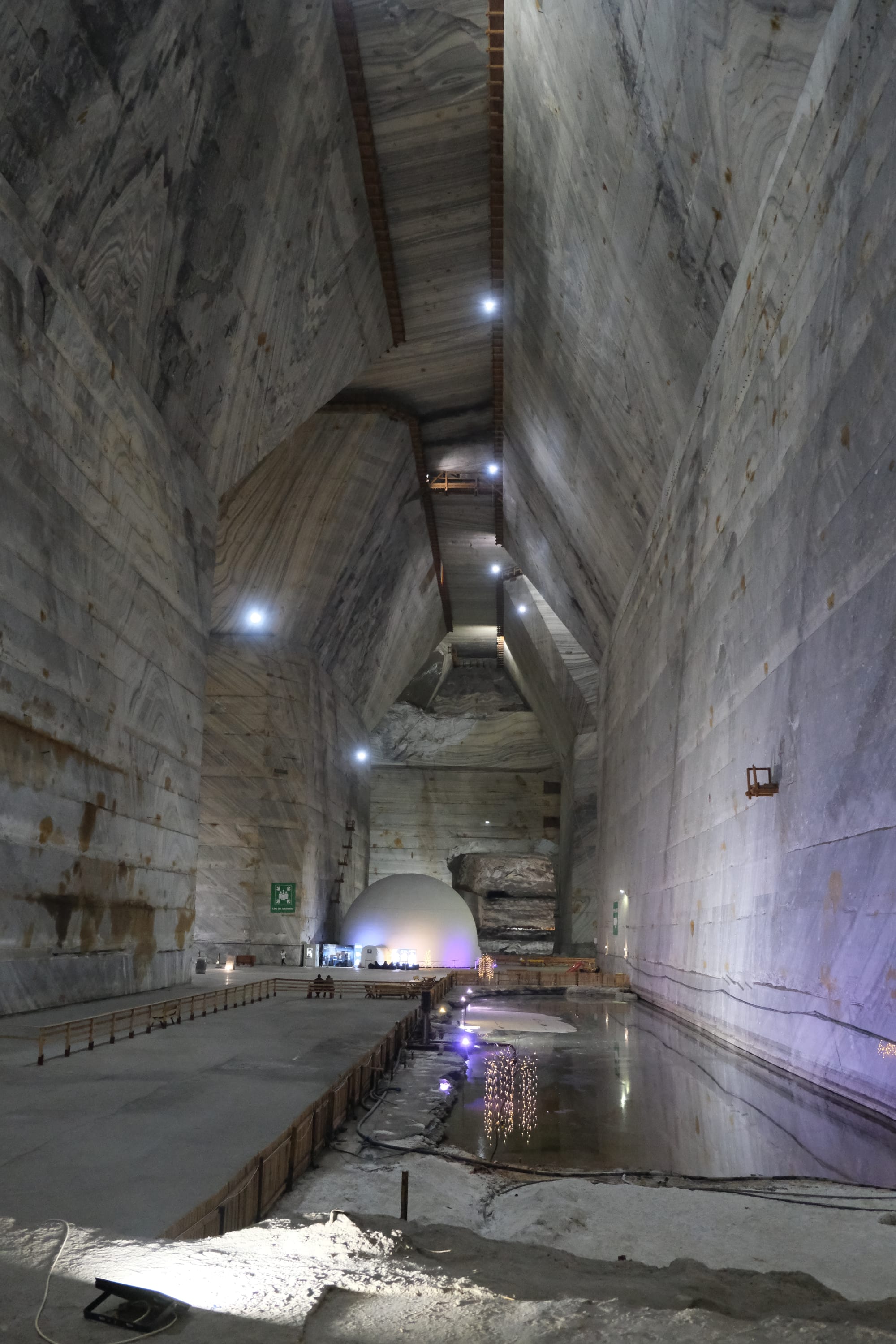
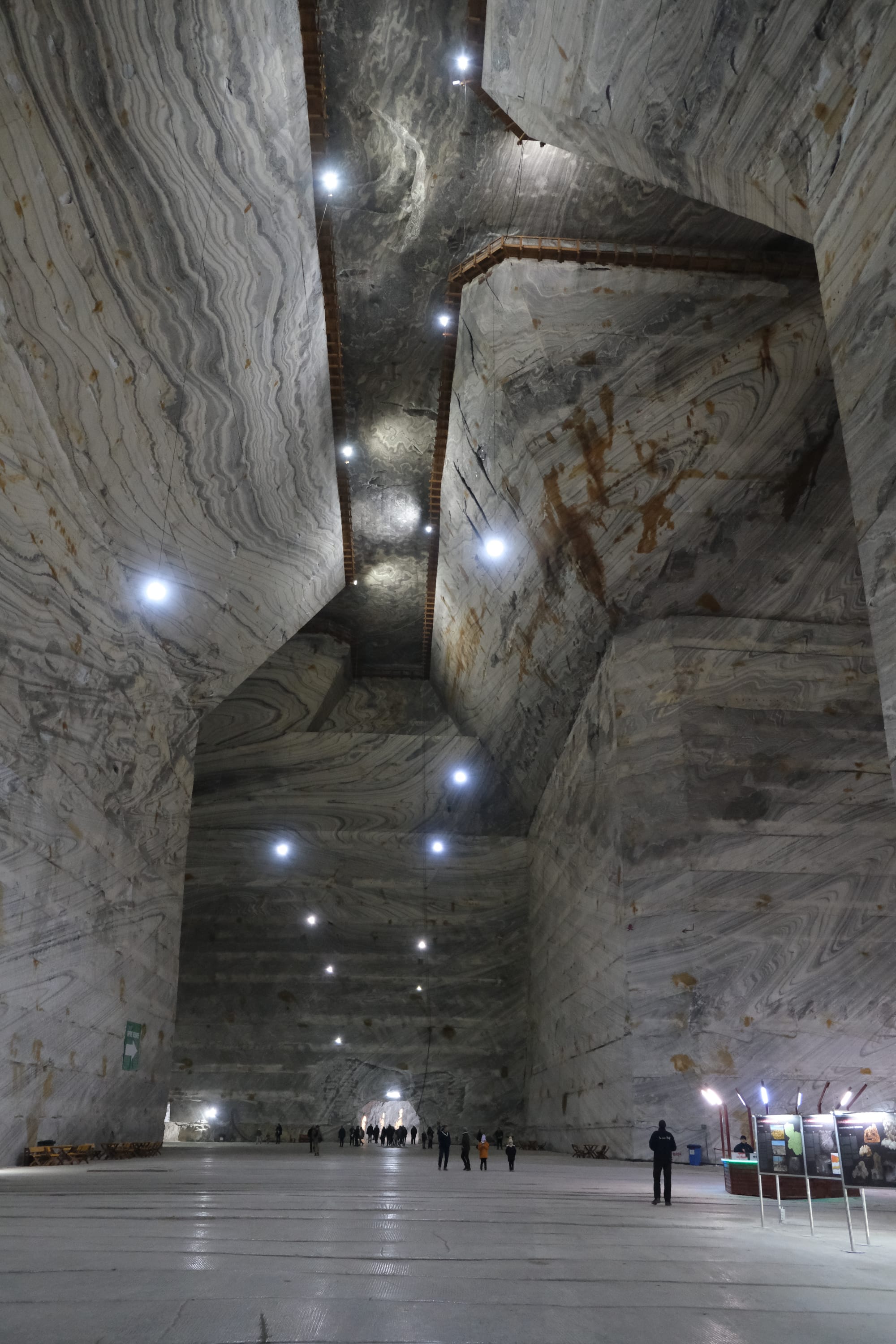
Being in the mine was amazing and I was always trying to capture its beauty. Because of how huge the mine is I was often taking pictures vertically, as I tried to capture the vertical height of all the chambers. Each chamber had a trapezoidal roof, with a narrow ceiling (10 meters) that widened to the full width of the room (32 meters). These chambers intersected each other at right angles and some came together to form a loop, although certain areas were closed off, so there was just one pathway through the chambers that was accessible. In total I was able to see six chambers.
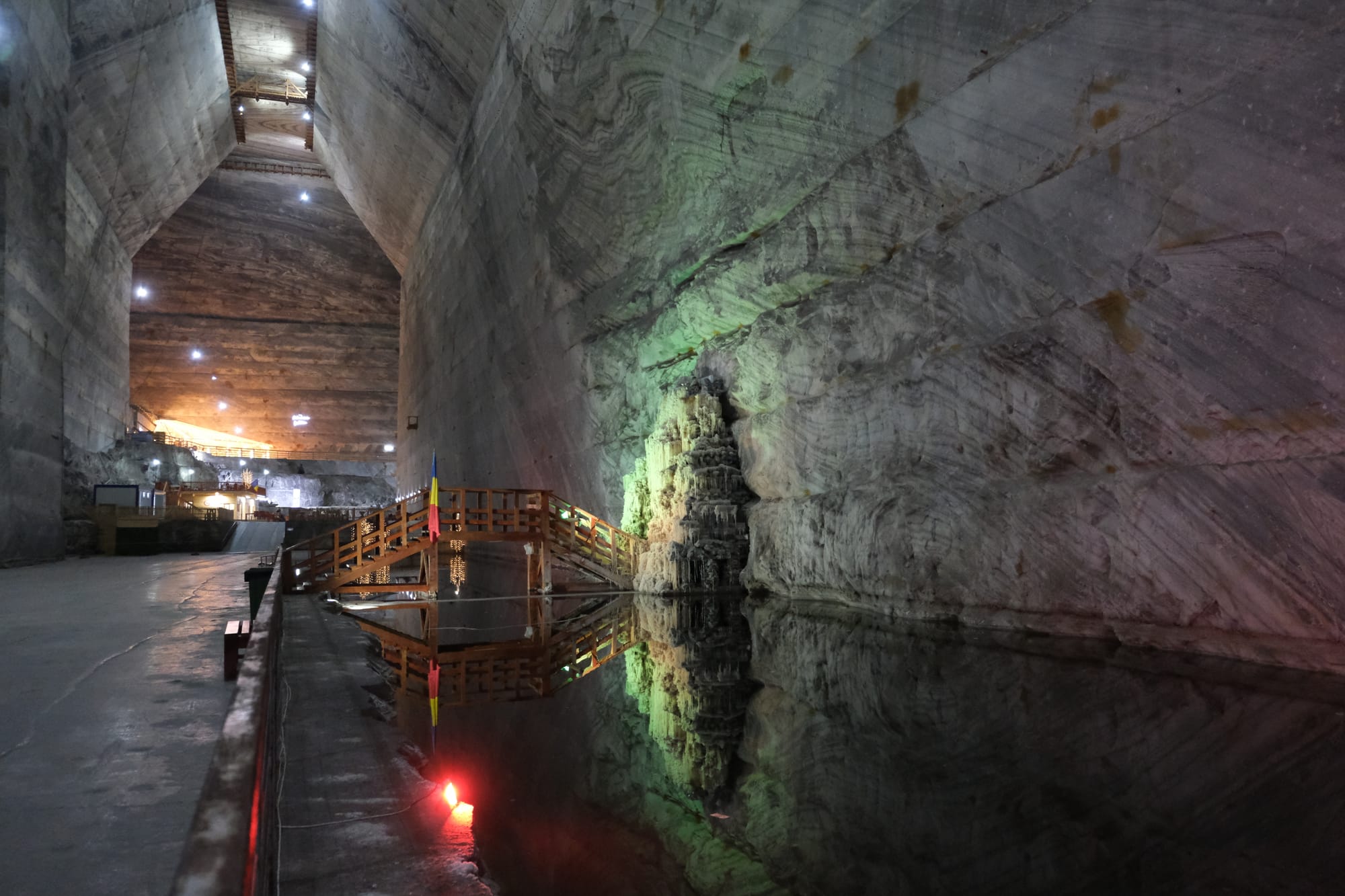
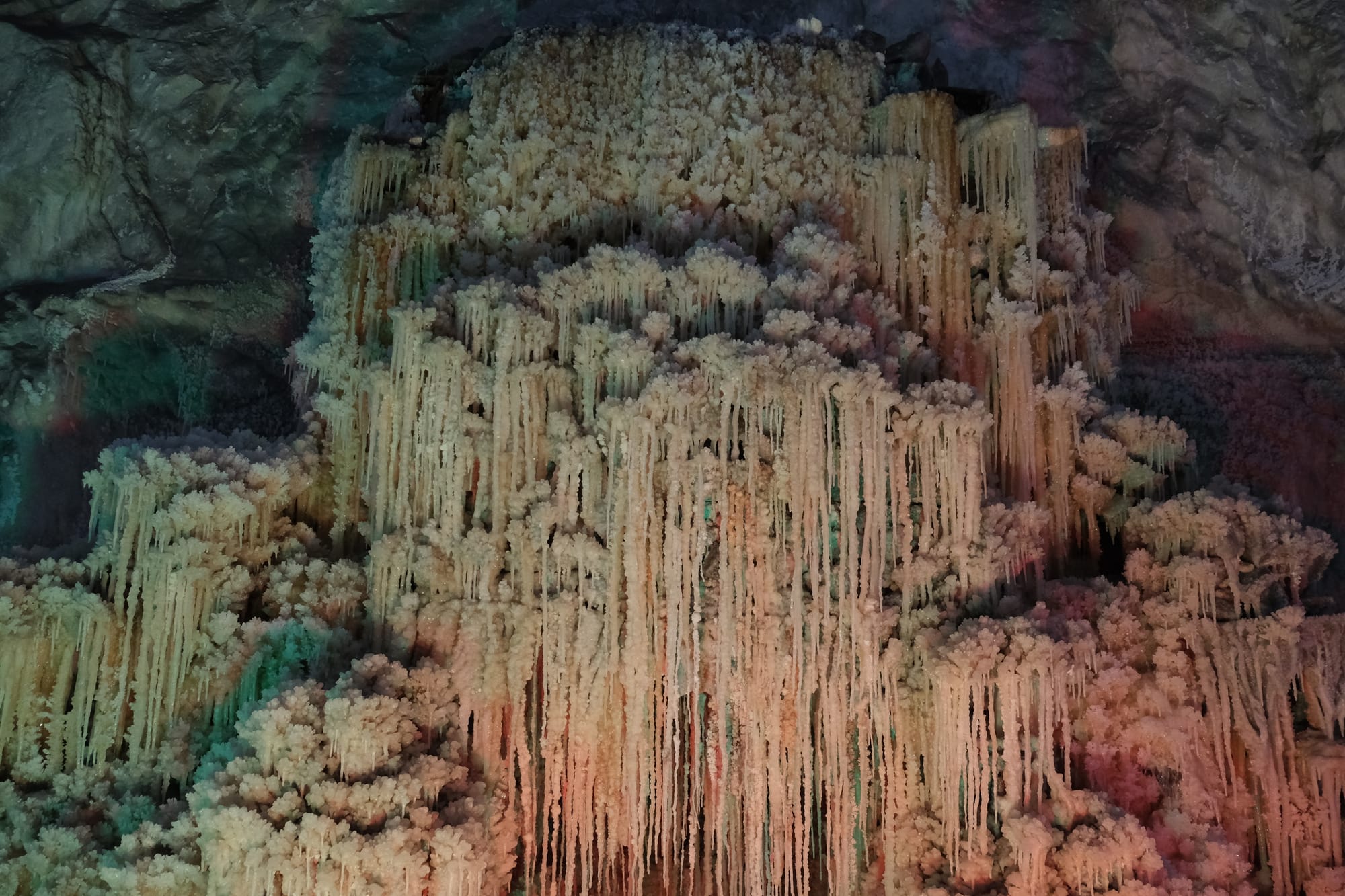
In this chamber there was a pool of water. The bridge connected to a spring of some sort. Mineral laden water was dripping from the wall, creating this stone waterfall.
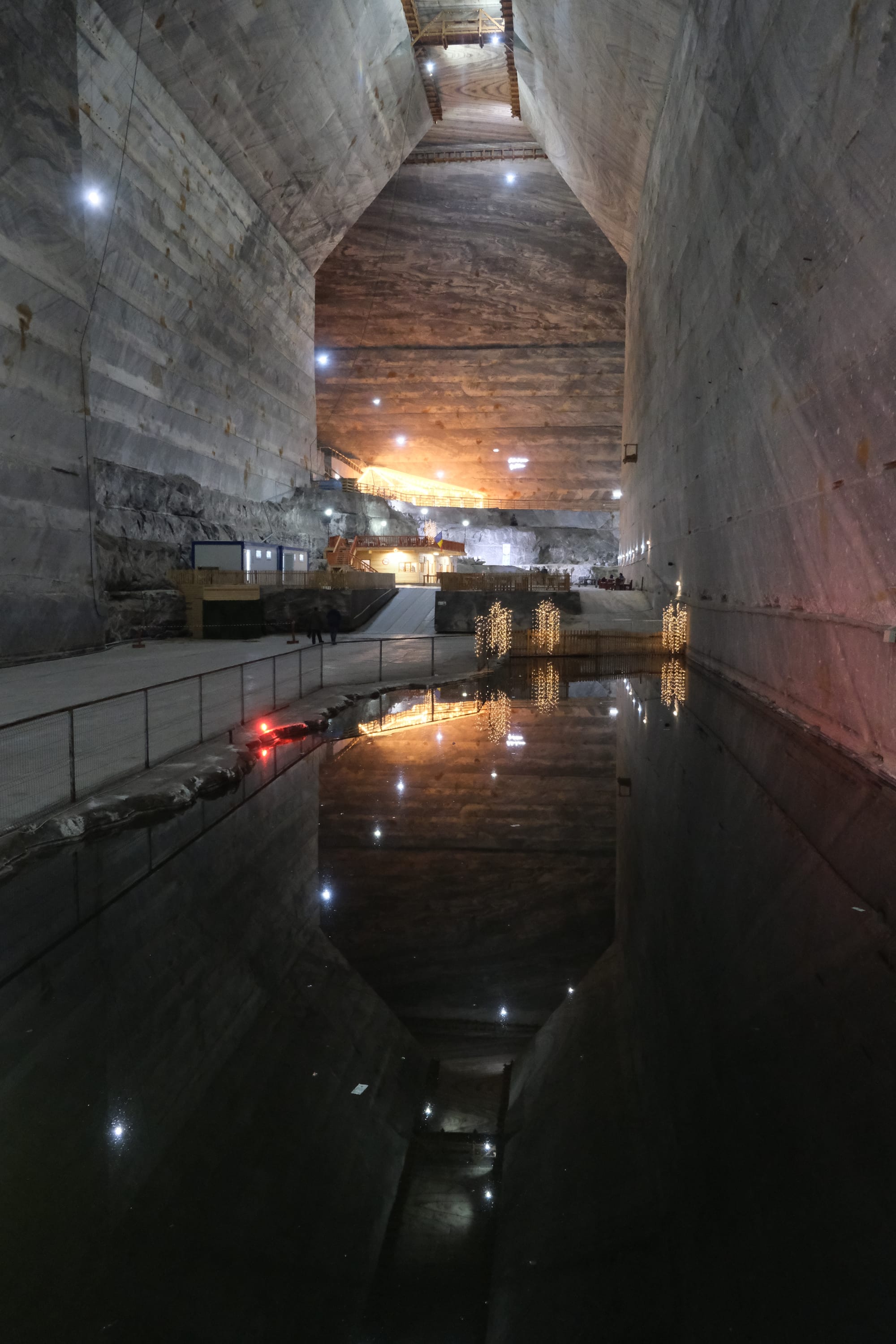
I was quite happy with this picture which I took from the bridge. I was able to capture a dark reflection of the chamber in the perfectly still water. Further down this chamber are the toilets and a little shop. The bright glowing structure at the very end is a cafe.
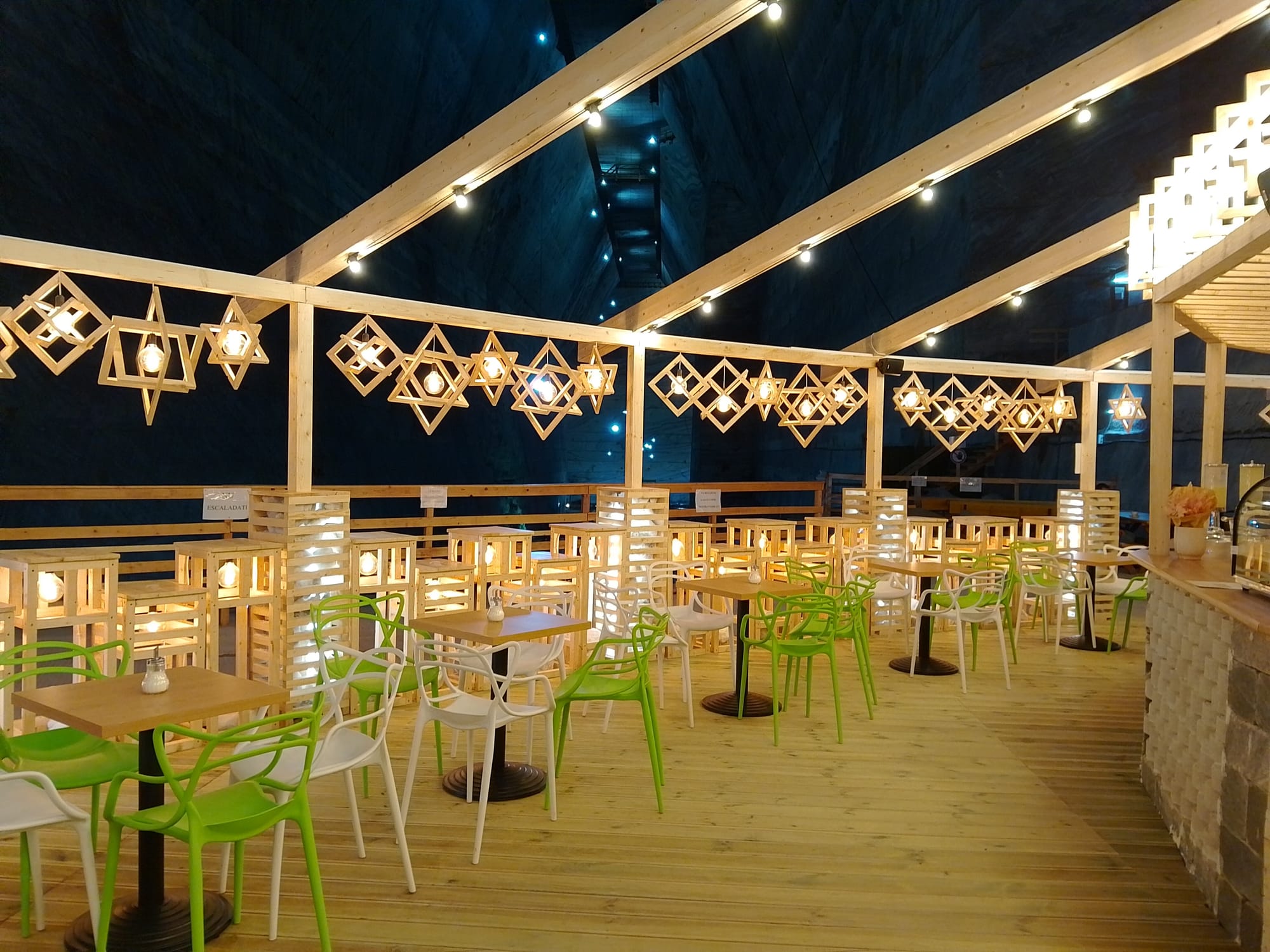
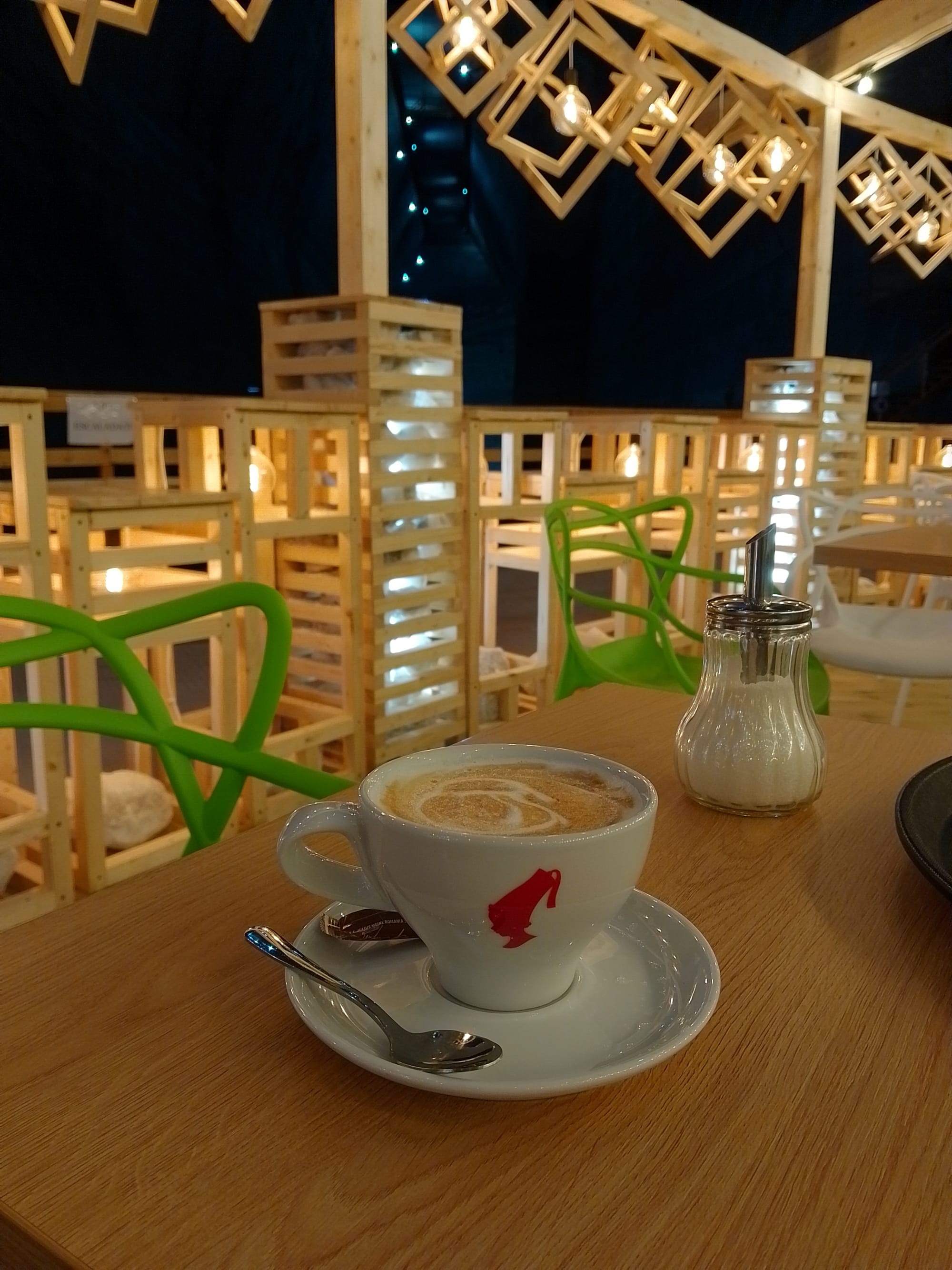
I stopped at the cafe and enjoyed a coffee. I found the novelty of this very satisfying. As I sipped my coffee I could look out beyond the bright lights of the cafe and see the vast expanse of the mine beyond.
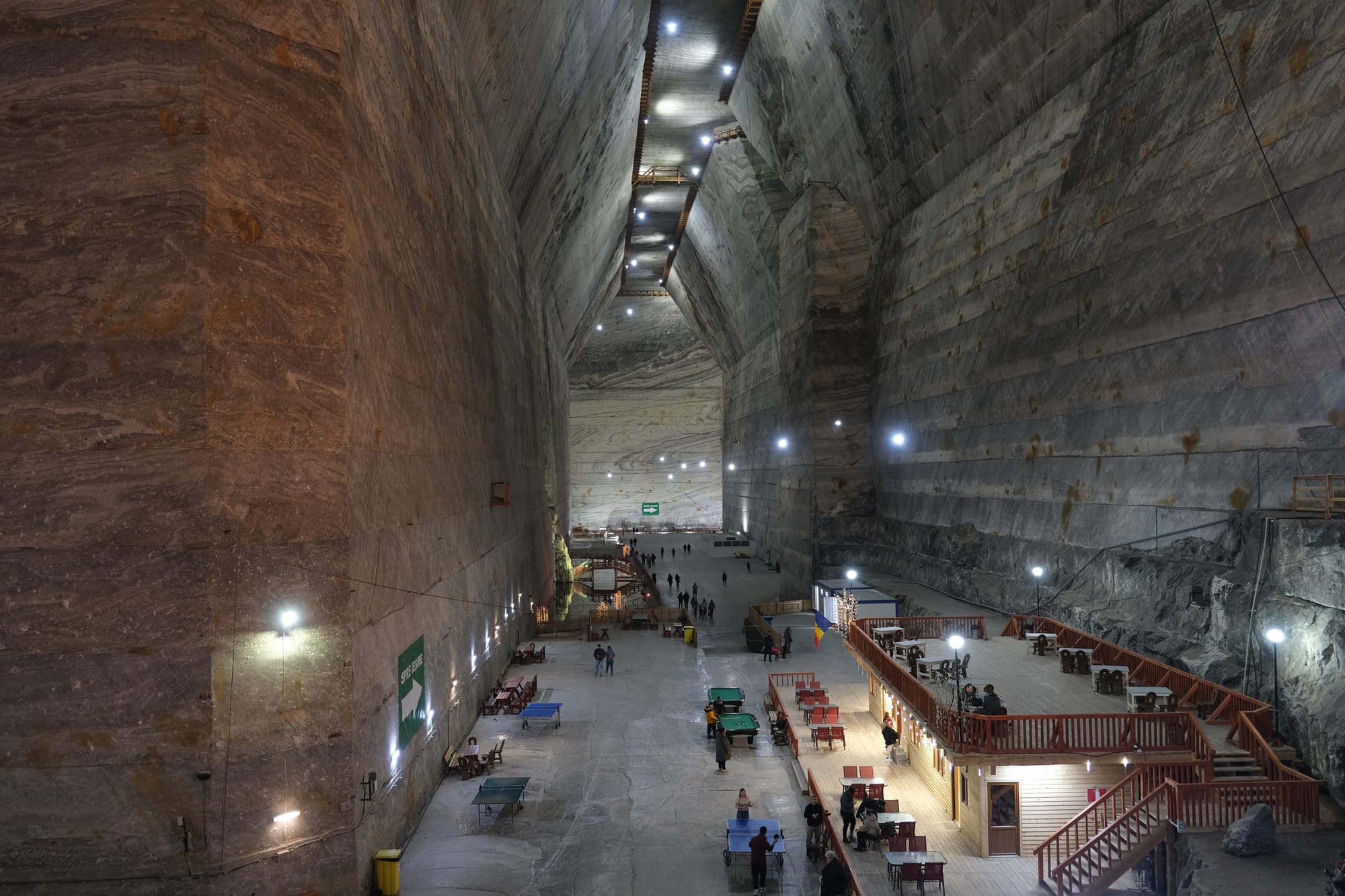
The cafe was on a section of ground that was higher than most of the chamber floors. From there I had a good view of one of the central chambers, where the little shop was located. This image has slightly higher quality than most of the others as I was able to rest my camera on a guard rail and use a longer exposure time, effectively like using a tripod.
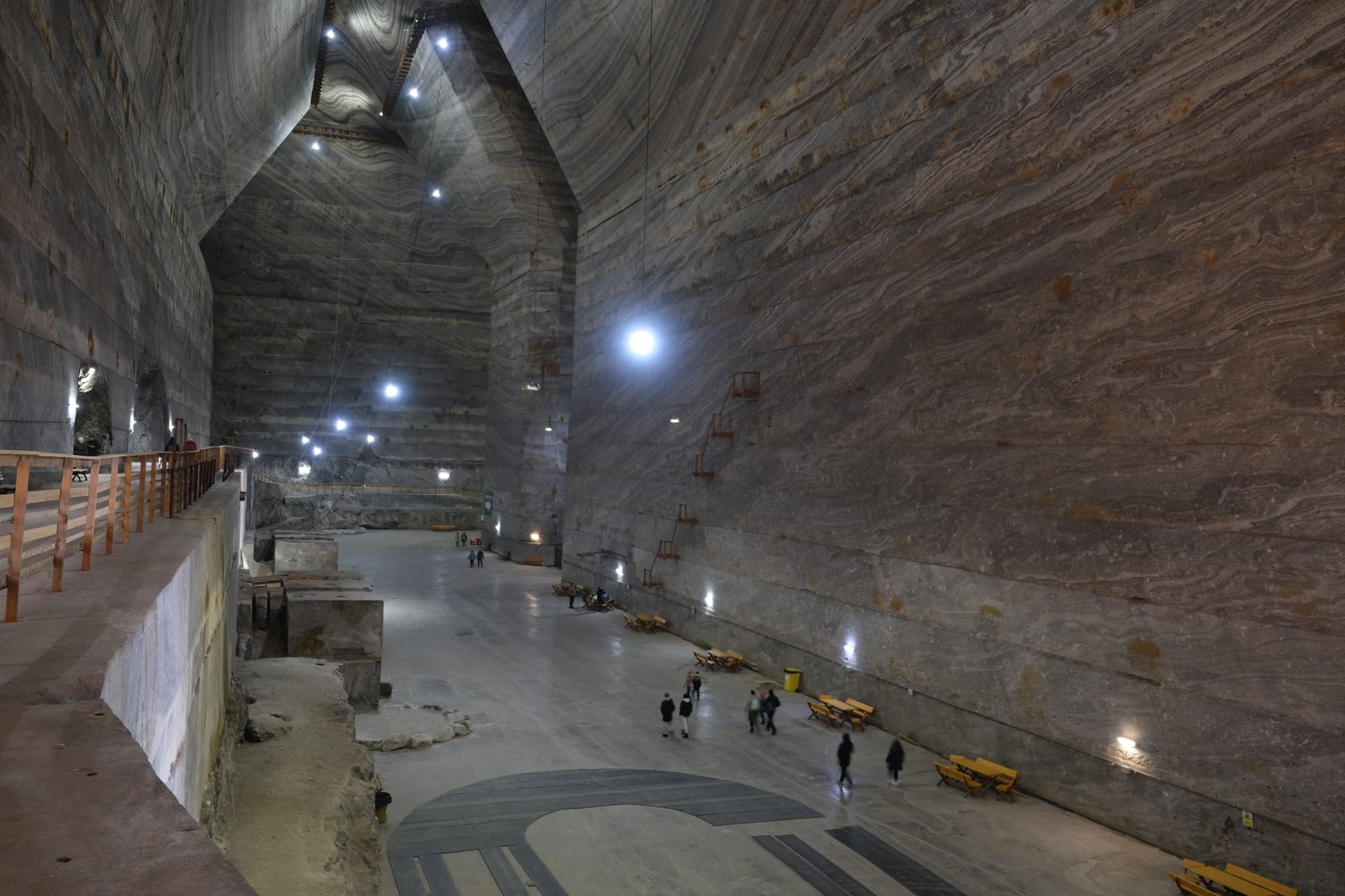
Another image I took with guard rail support, here you can see on the left the pathway following the wall and going down the opposite wall to meet the main floor.
There were two things I loved about this mine, beyond just the sheer scale of it, these were: the exactness of the walls and ceilings, as well as the layers of strata that twisted and folded in wonderful geometry. This place felt like it could have been from a fantasy book. The straight lines of the walls and ceiling, with their exact widths and lengths, felt like something that could have been made by dwarfs. I could easily see these chambers as being part of the Mines of Moria form the Lord of the Rings. The incredible layers of strata reminded me of a different book series, the Stormlight Archive, where there is a tower made from stone, called Urithiru. The author constantly describes the chambers in this tower as having incredible lines of strata. So this place reminded me of Urithiru.

The lines of strata are absolutely amazing. On this wall was such a huge fold in the rock it looked almost like a giant fingerprint.
I made sure to capture some of the walls with patterns of strata that I found most interesting, and because I am writing this you must now view these images as well.
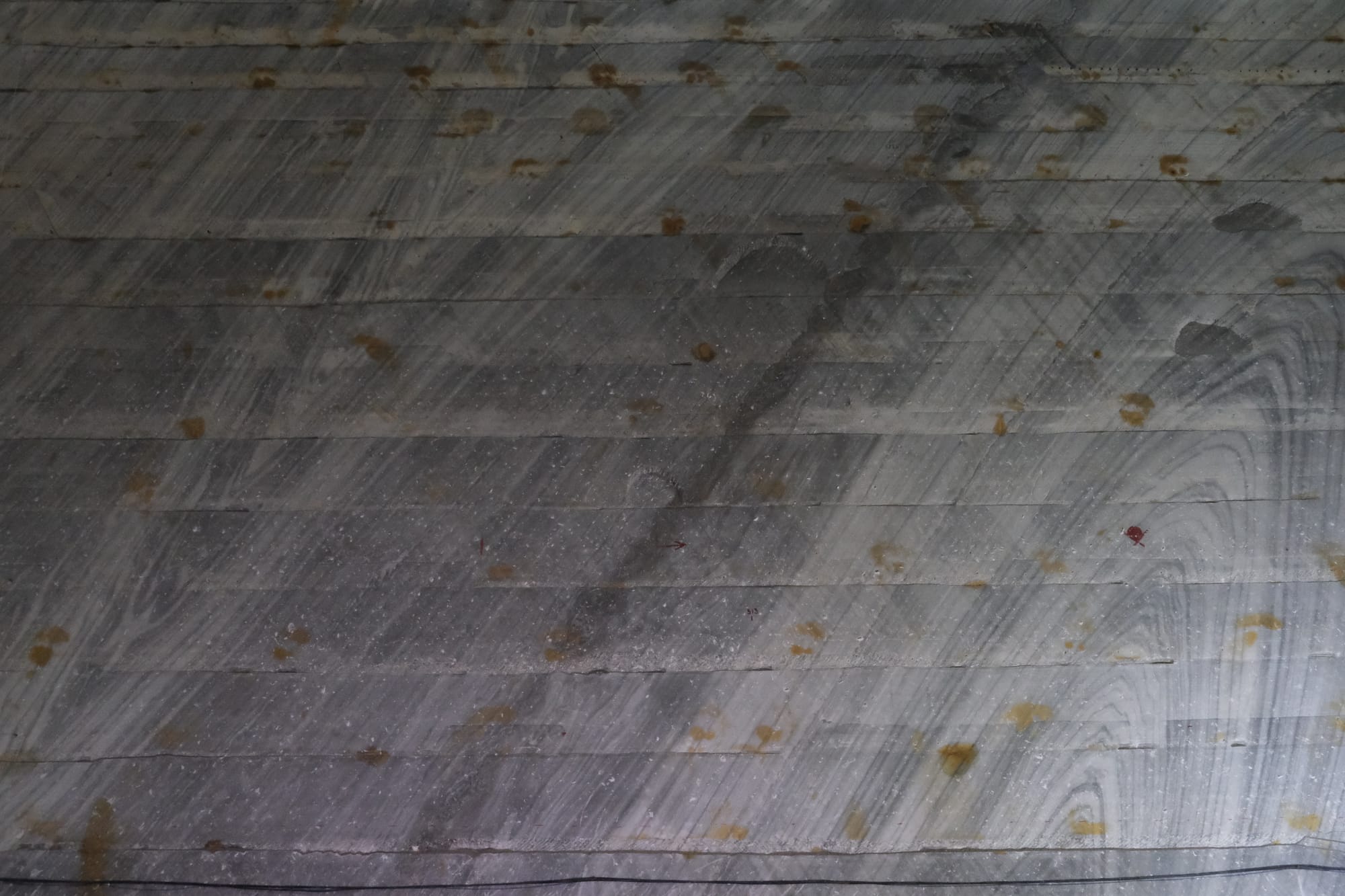
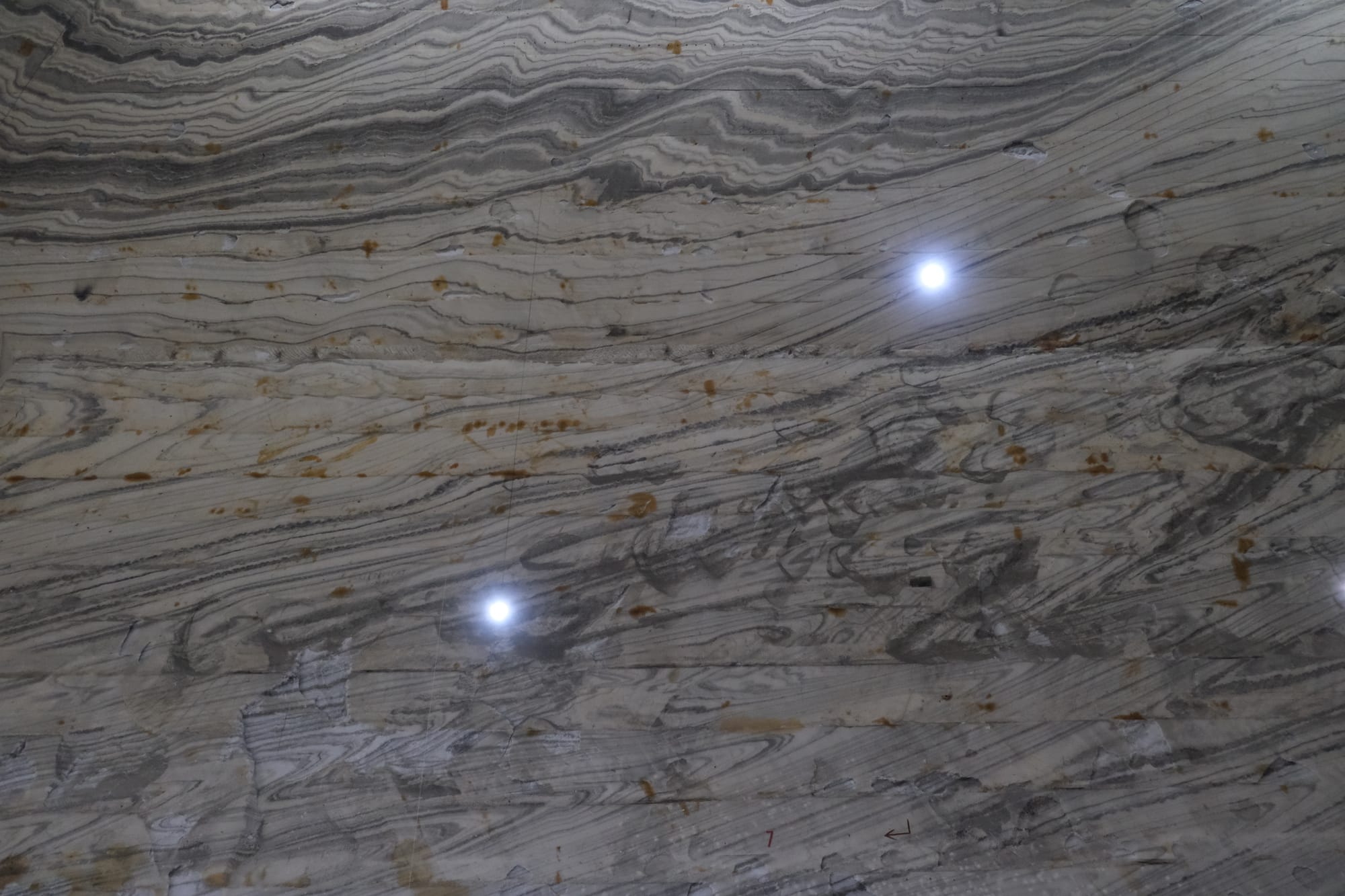
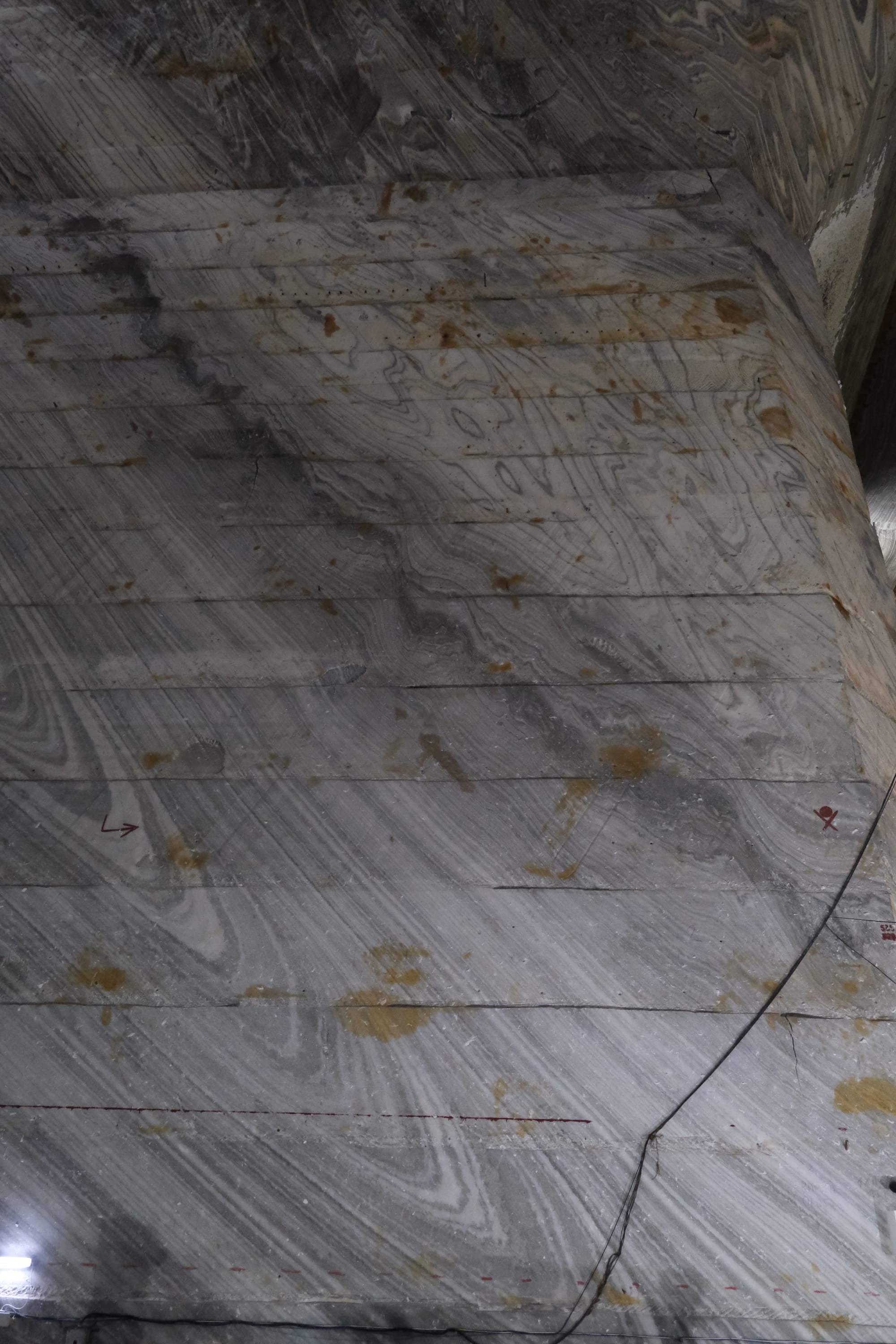

While these images do a great job of capturing the layers of strata, they somewhat hide the huge scale of these walls. Each horizontal line across the wall, made during the mining process, is 2.2 meters apart vertically. Each image has many of these horizontal 2.2 meters apart lines, this can give you a rough estimate of just how huge the walls are.
I especially love the last image in the above gallery that shows the lines of strata as if they were a turbulent flow of water, frozen in time.

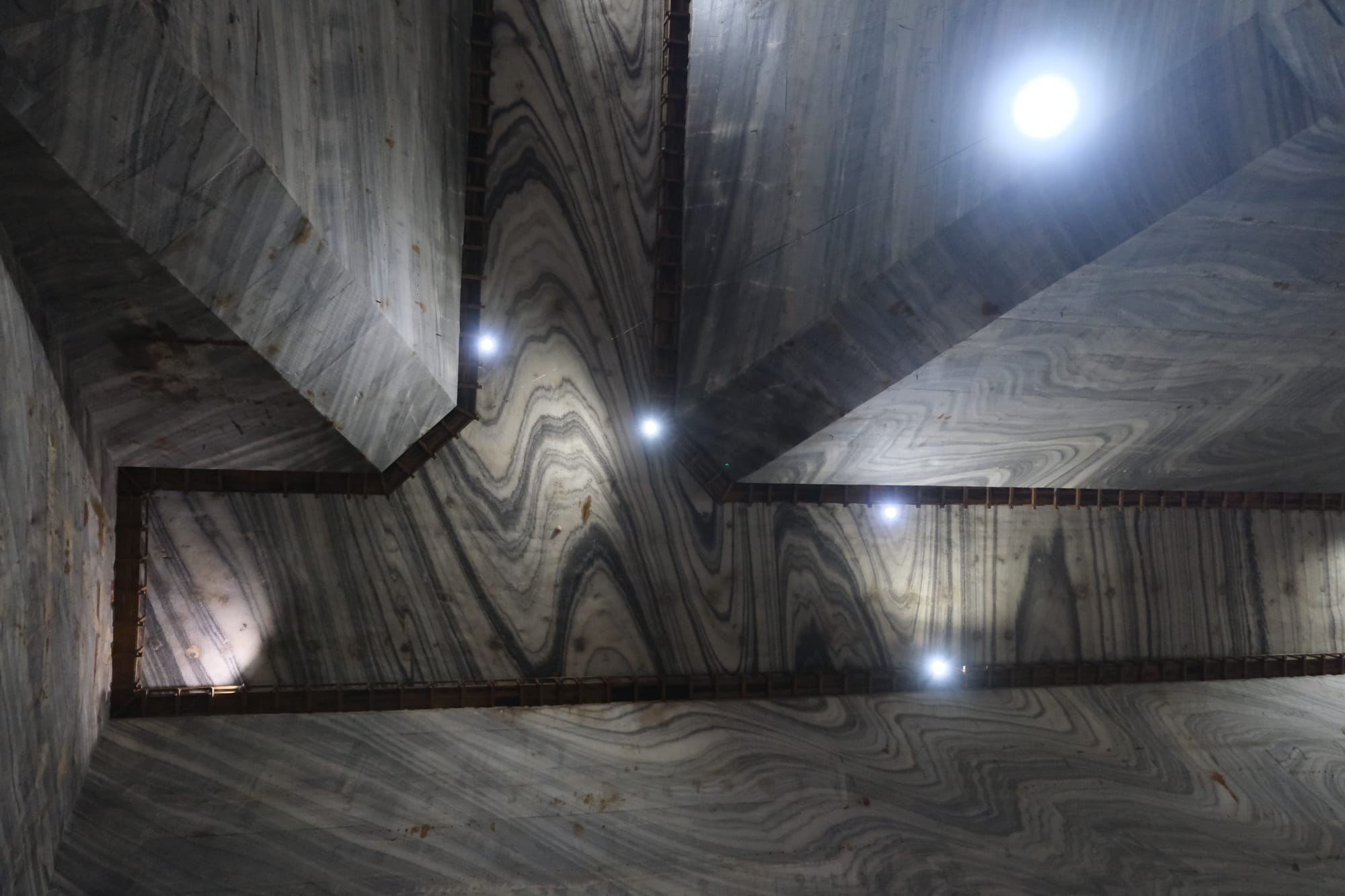
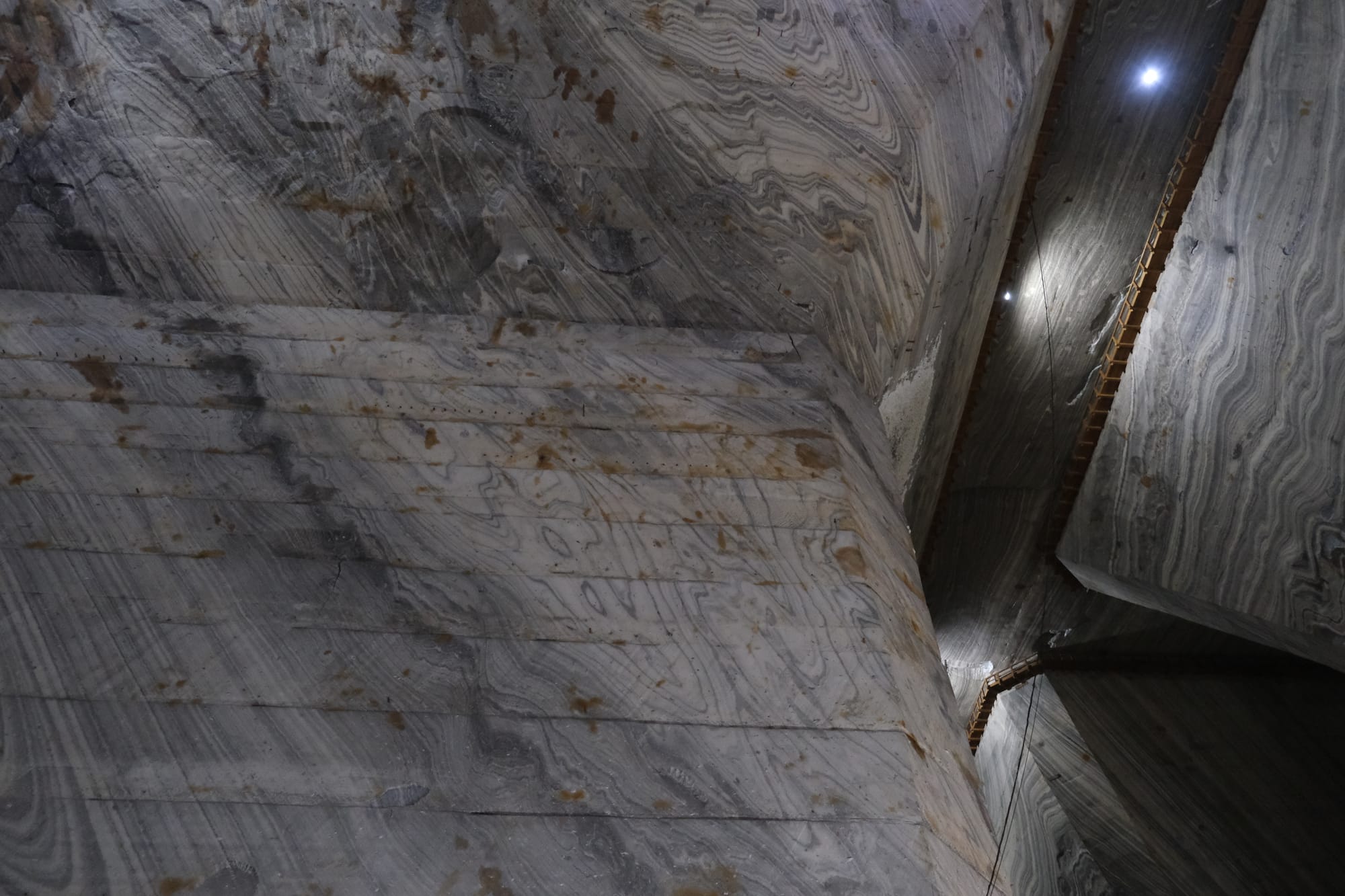
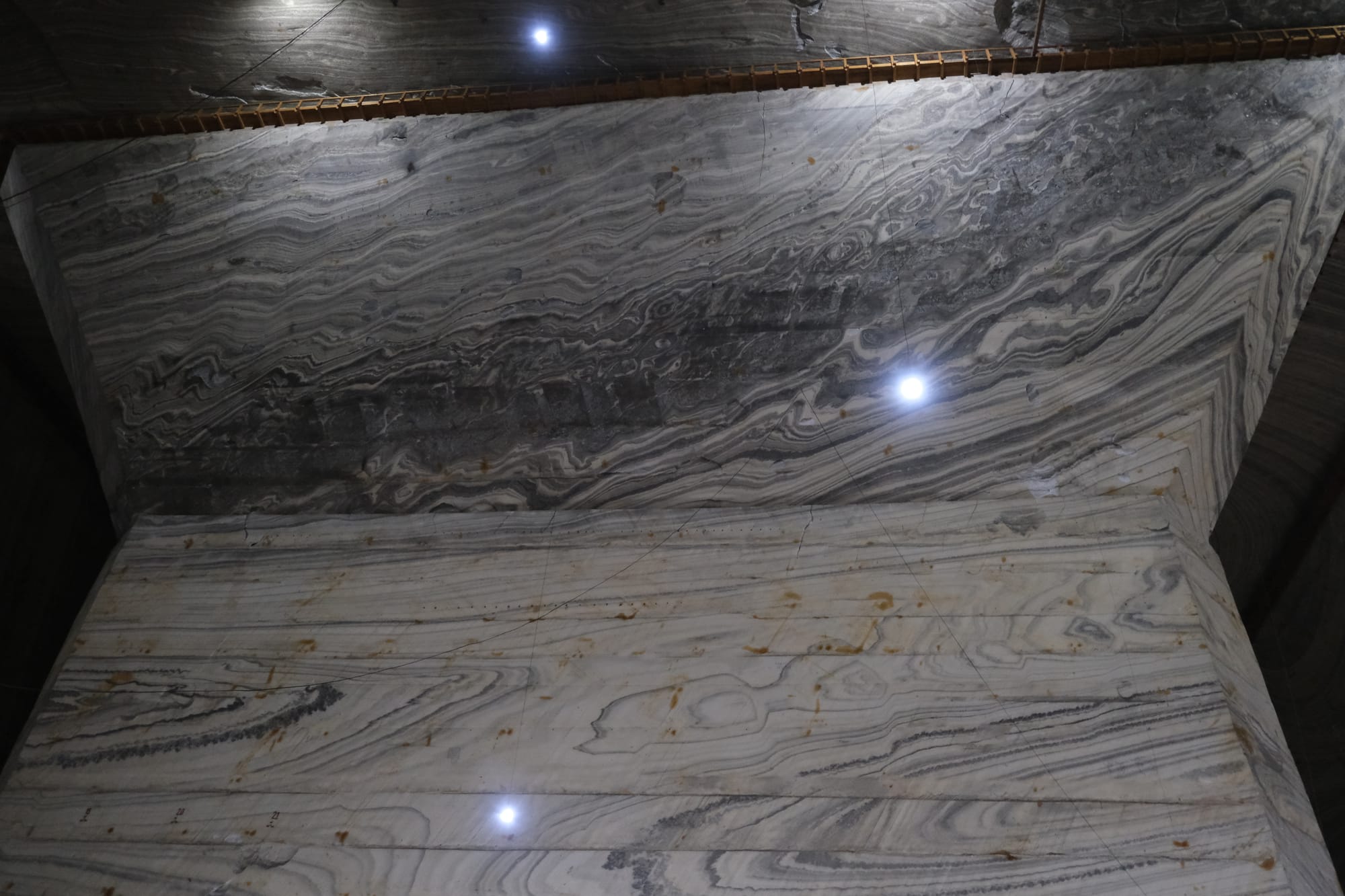

Something else I experiment with was exploring the interplay of the strata layers with the sharp angles of the roof. A few of these images I took looking straight up as I found that angle fascinating.
You can also see, on some of these images, a walkway along the edge of the ceiling. This walkway is not accessible to the public and is used for maintenance.
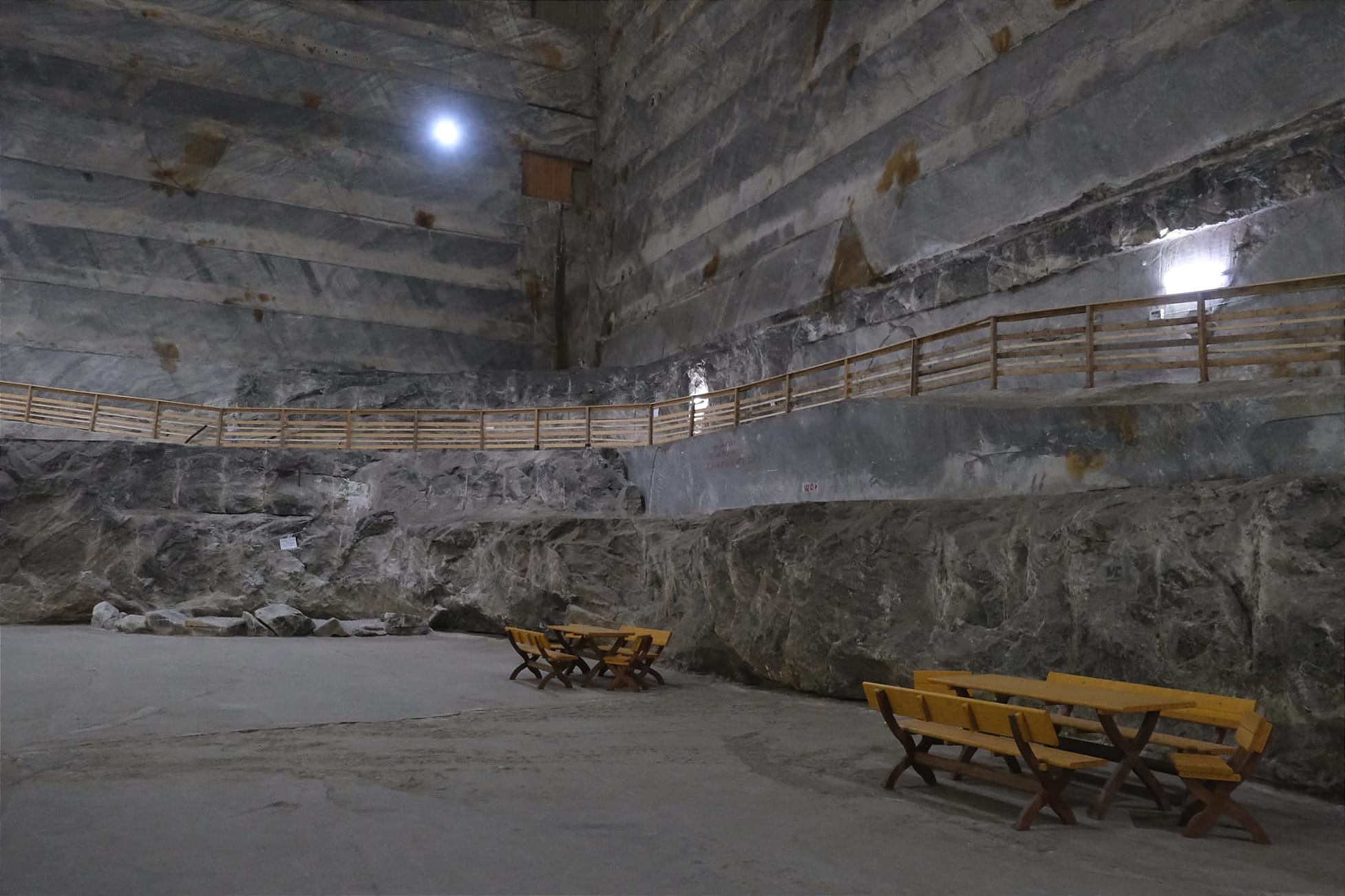
This is a good image to see how the mine was dug. They basically started from the top of the room, and dug out the floor in sections of 2.2 meter vertical increments, lowering the floor each time. Here you can see a few of these 2.2 meter vertical layers that were not fully extracted and now serve as a walkway (the same one that goes to the cafe).
You may have also noticed in a few of these images the picnic tables. These tables were present throughout the mine and it seems to be one of the common activities is to come down here with some food and hang out in the mine.
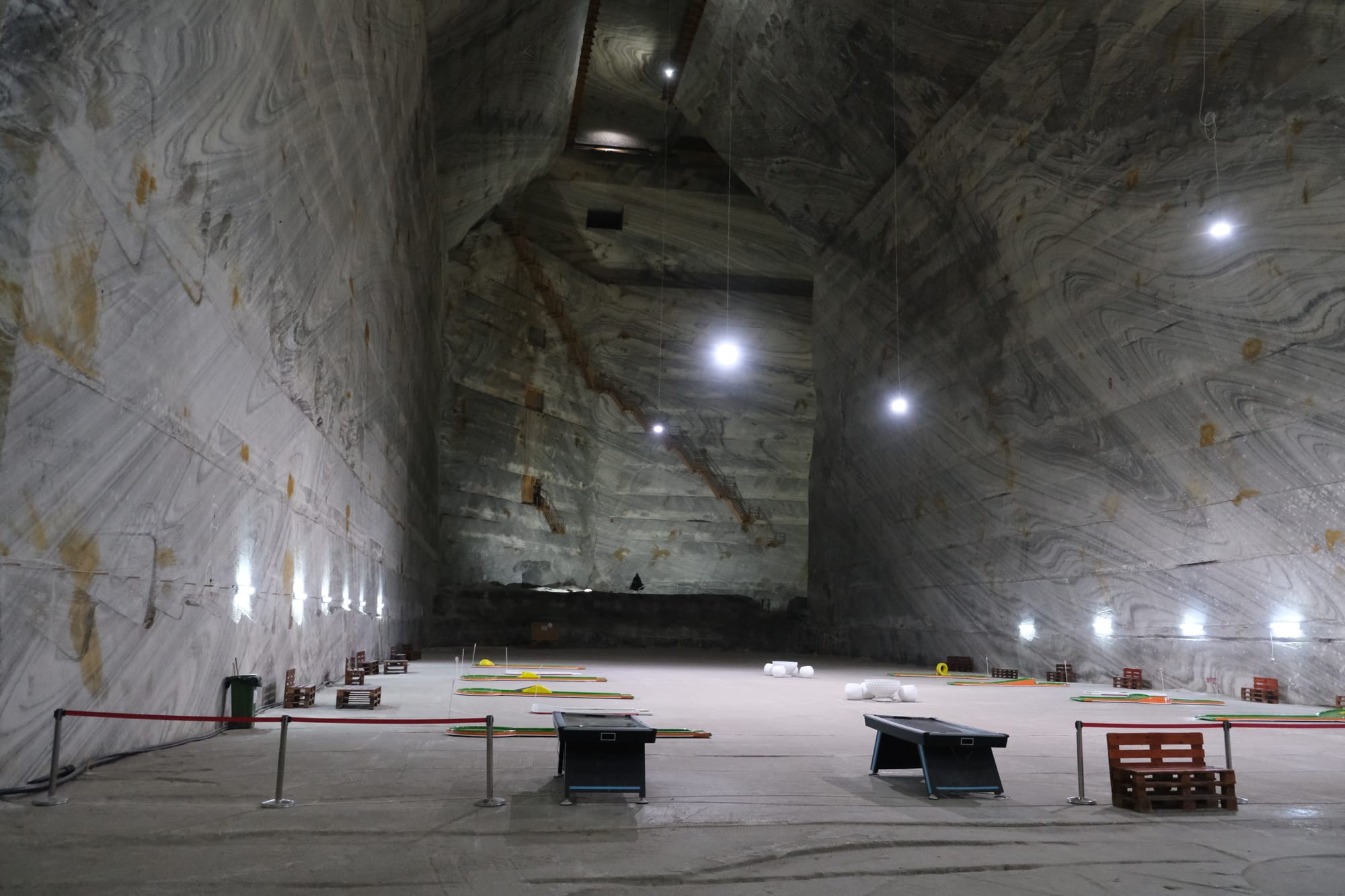
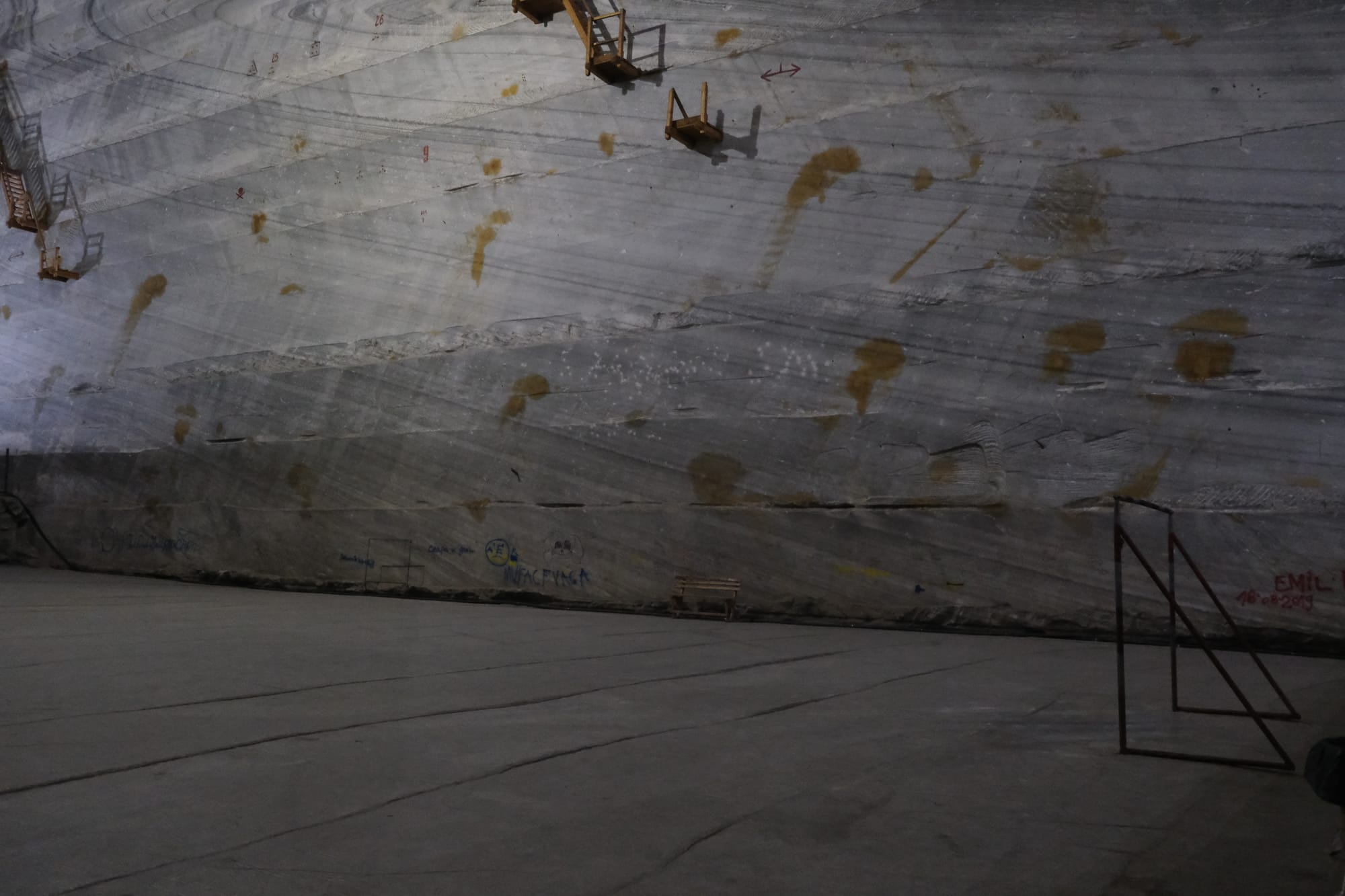

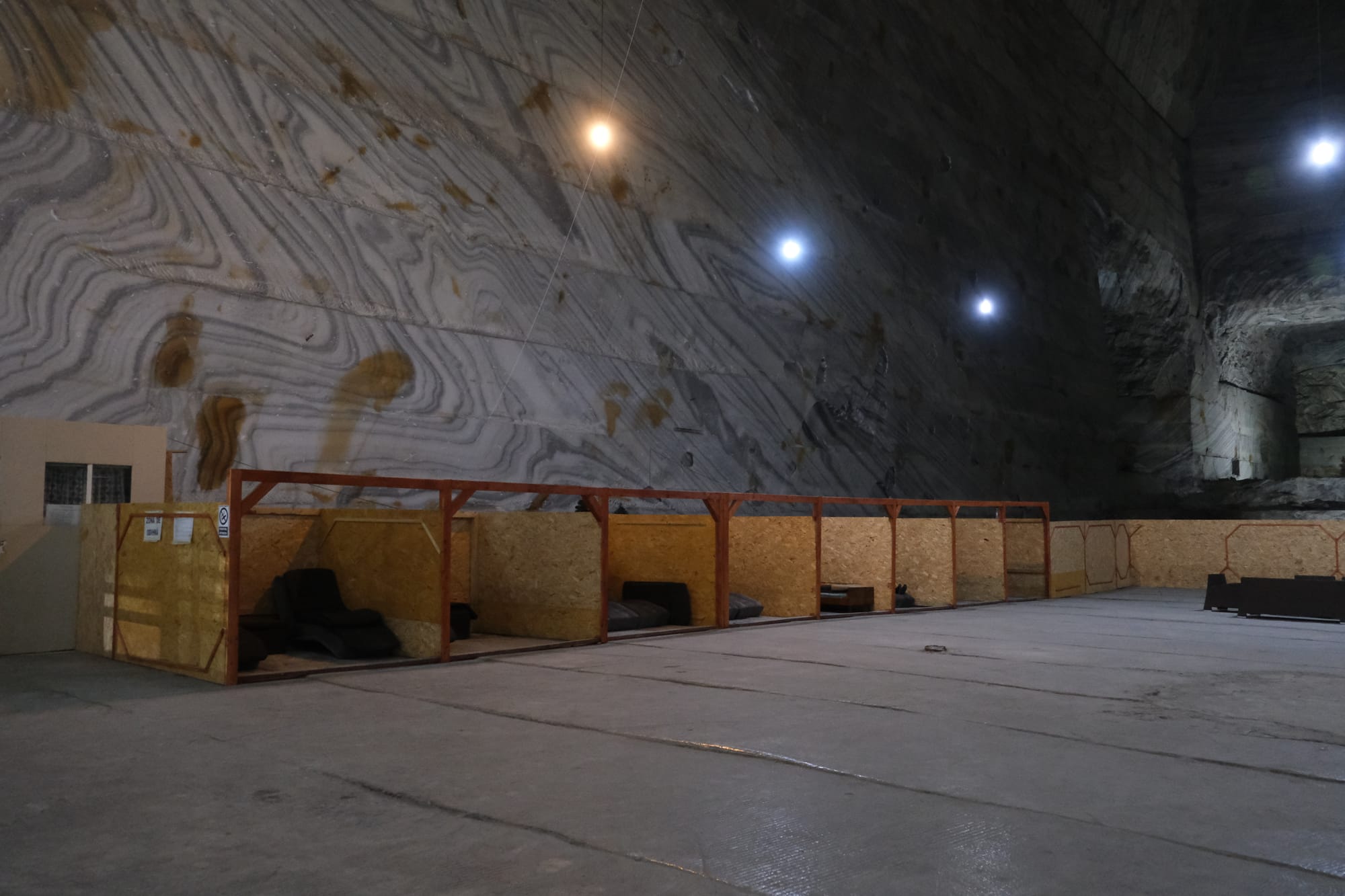
There are a number of activities available in the mine, including a soccer field, a basketball hoop, mini golf, table tennis, pool tables, and even an inflatable kids play ground. The last image shows a nap corner where I believe you can rent a booth to take a nap.
The air in the mine was incredibly salty, which is one of the reason why some people visit. The saltiness in the air was similar to what I have experienced at the beach, except the salt concentration in the mine felt like it was multiplied by ten compared to a regular beach.
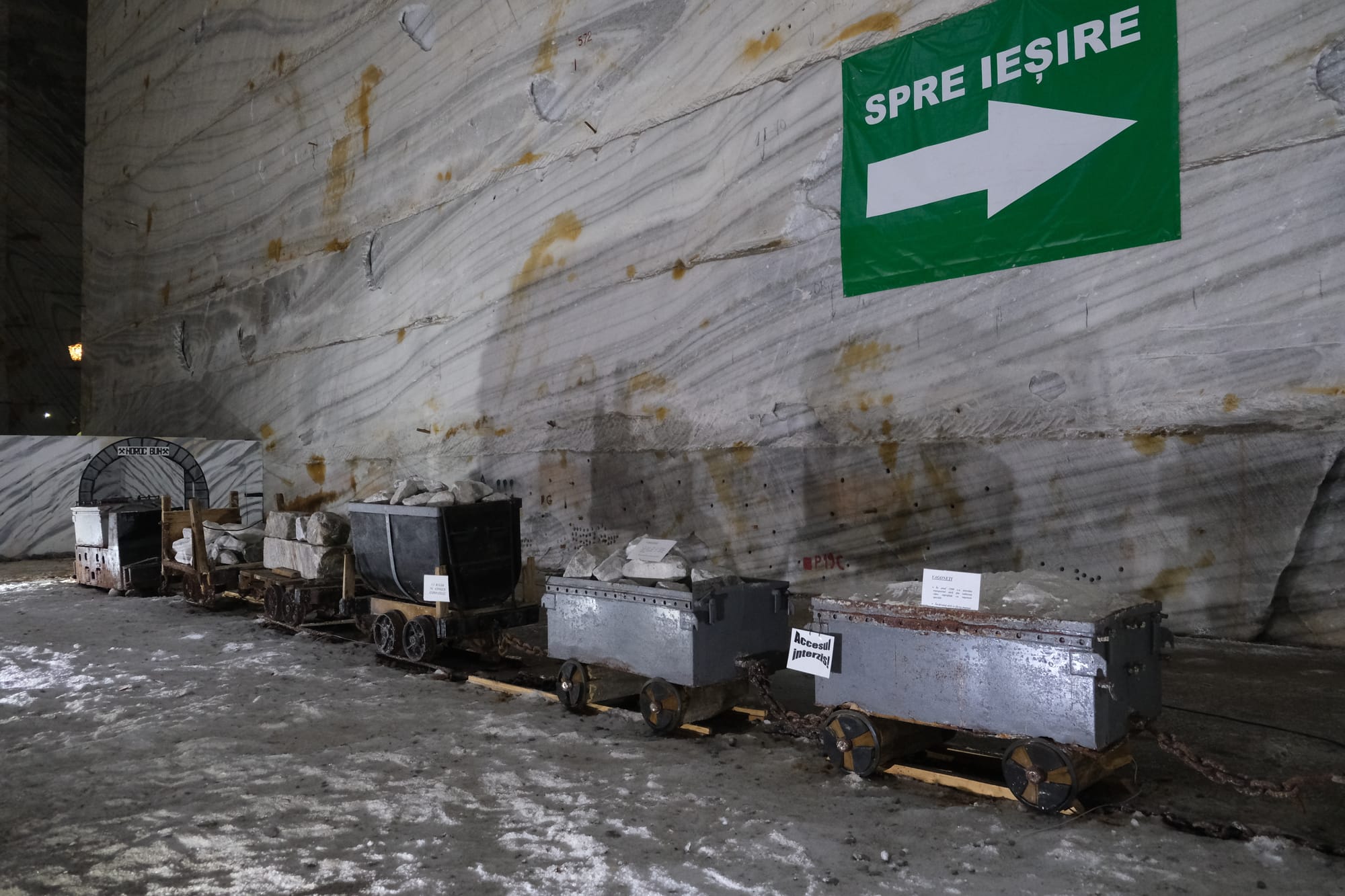
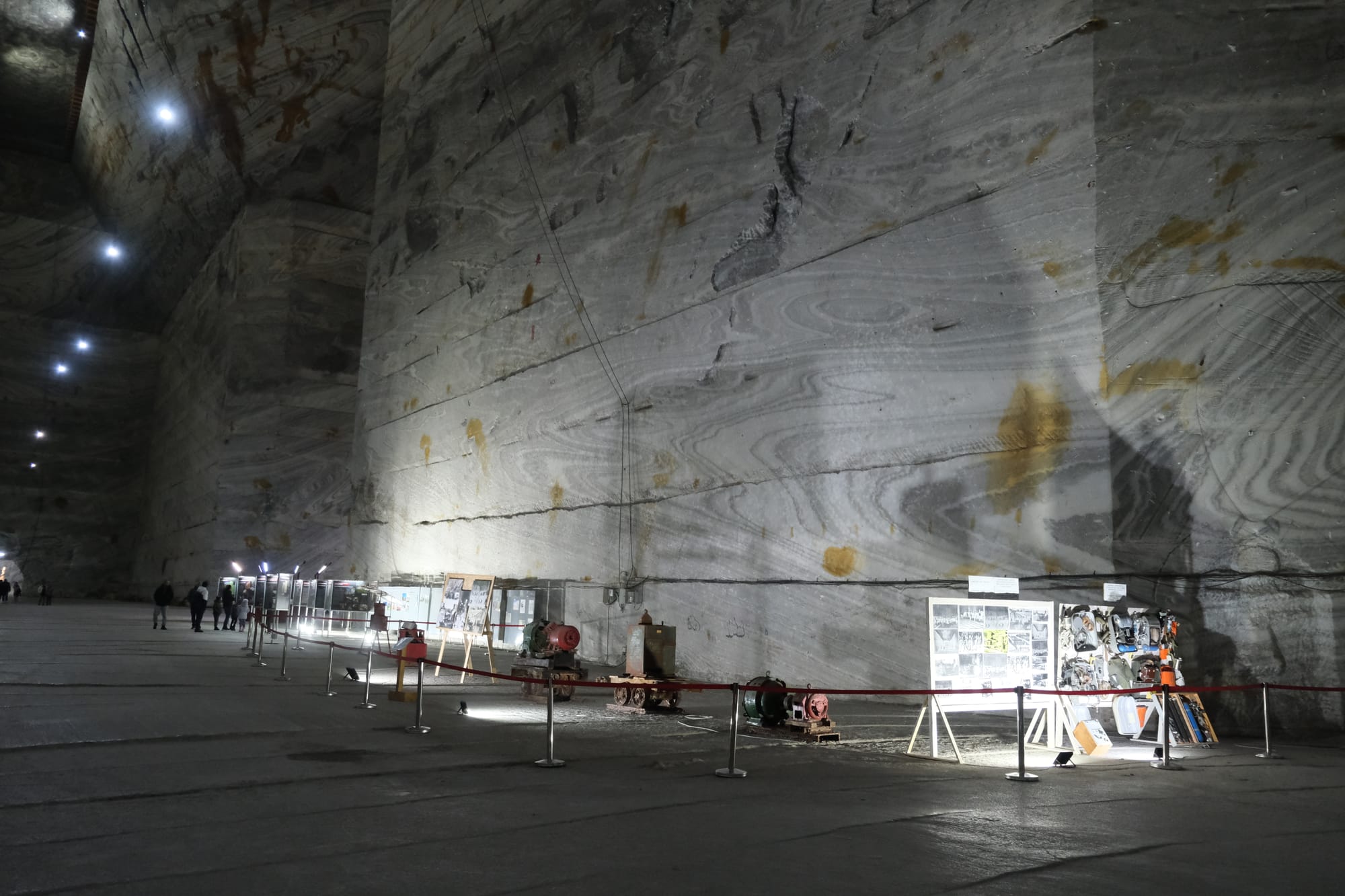
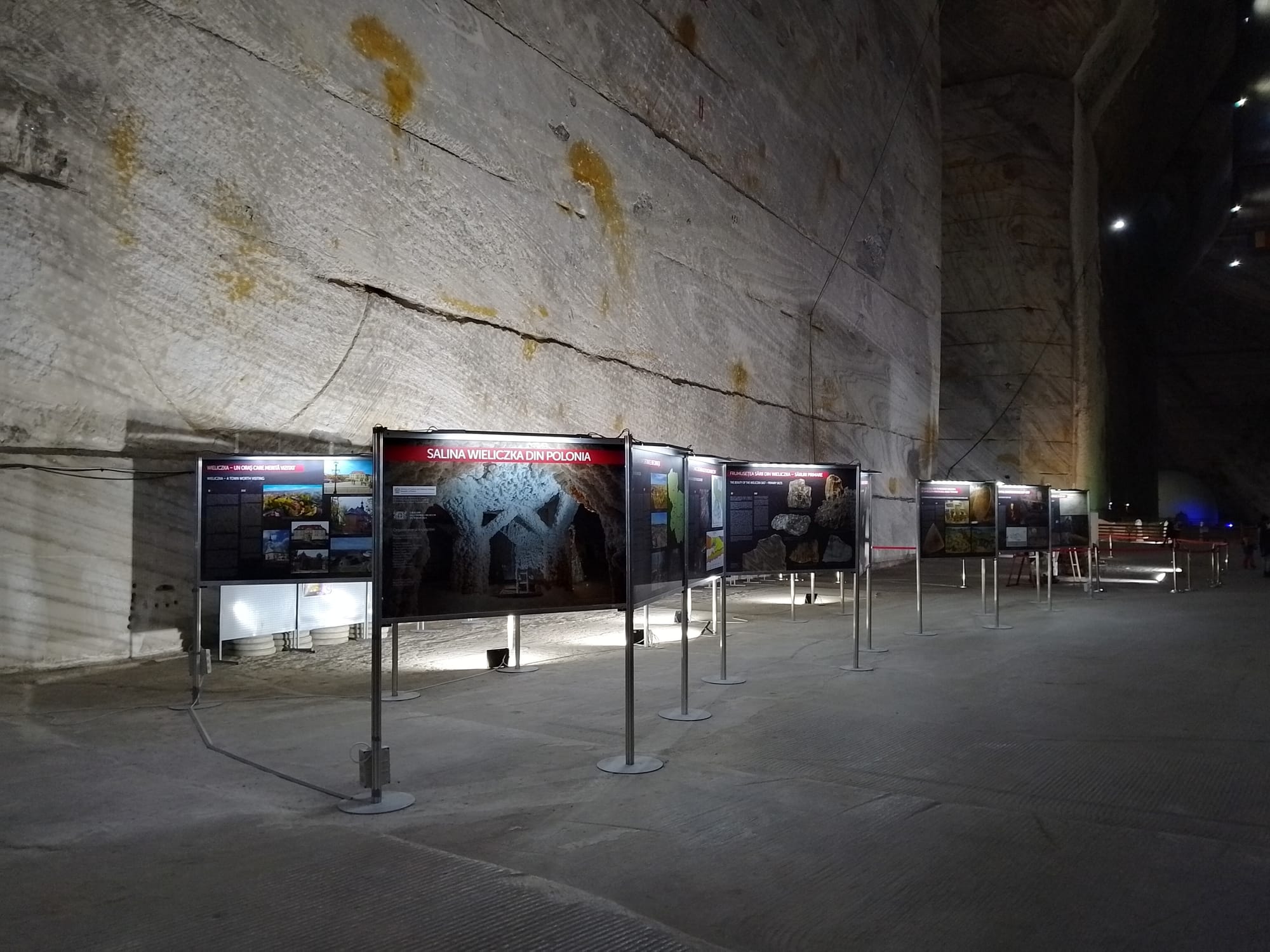
There were some displays about the history of the mine but not many, and hardly any signs were translated into English. This is something that I think the mine could improve on to become a more attractive tourist destination. The exception to this was the rightmost/last image above, these displays had a wealth of information, but about the Wieliczka salt mine in Poland. I found it so funny that the Poland could provide so much more information about their own salt mine in a foreign salt mine. Also I love how the Romanian signs describe the salt extraction process as the exploitation of the mine.
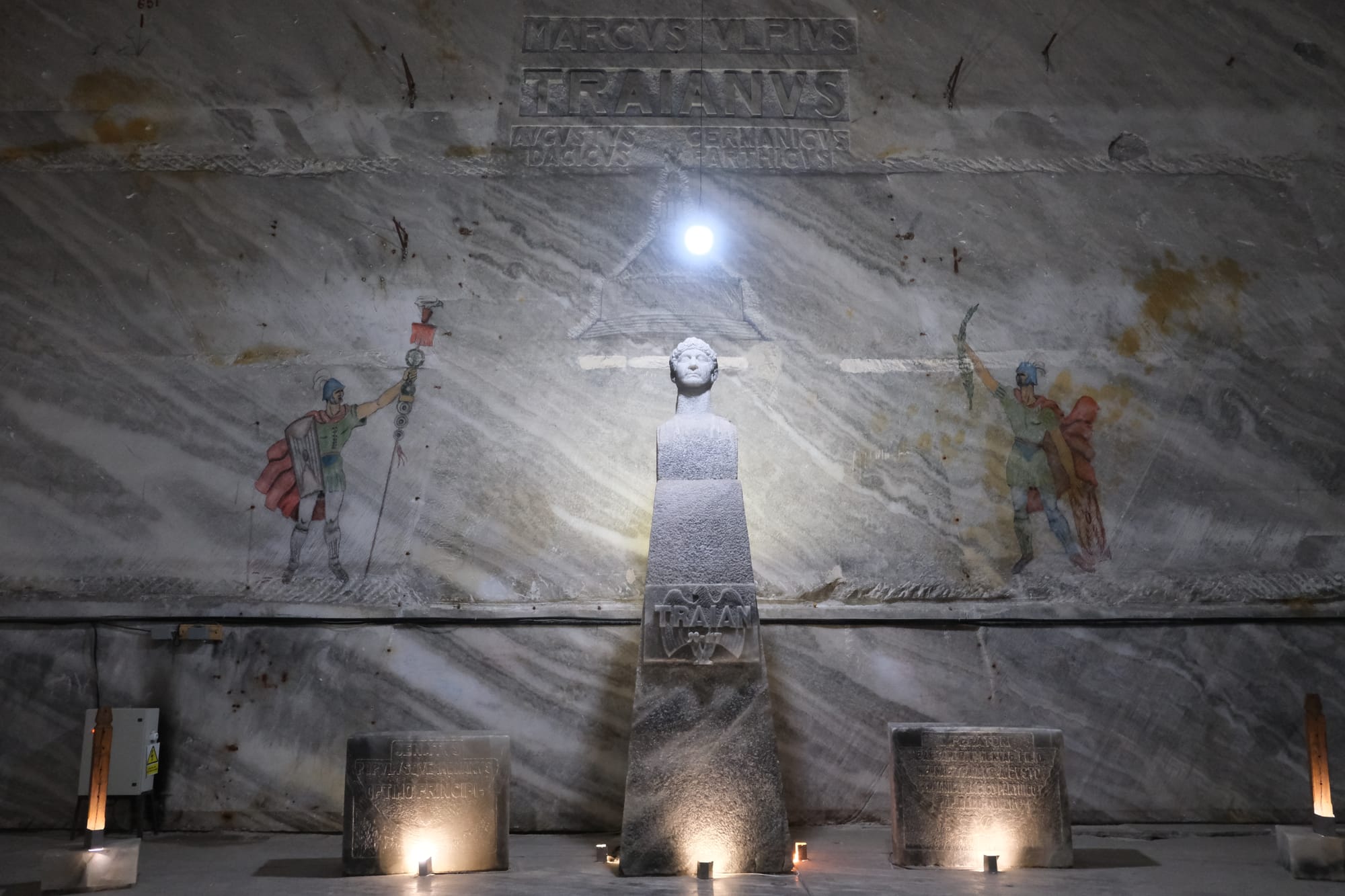
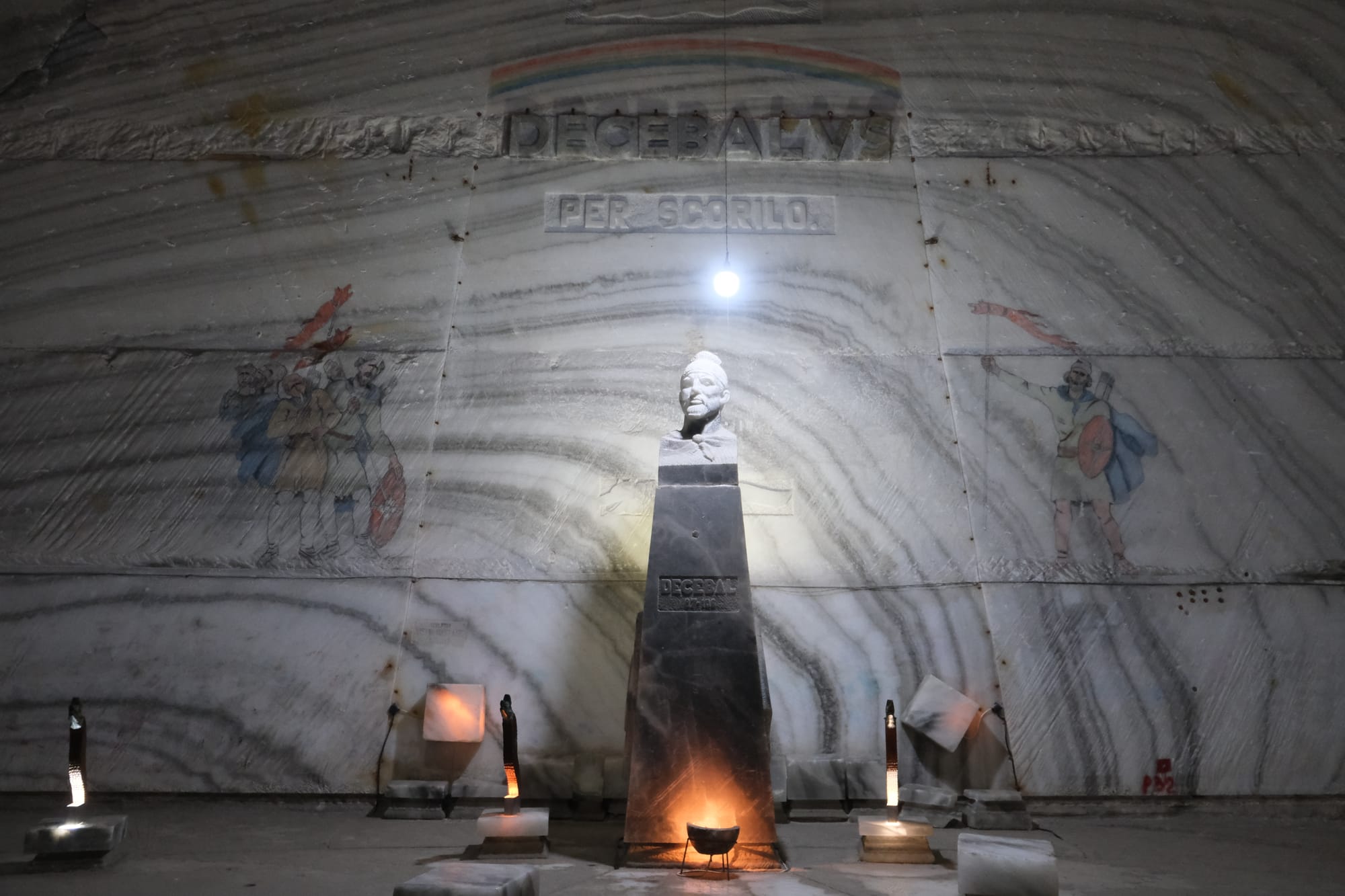
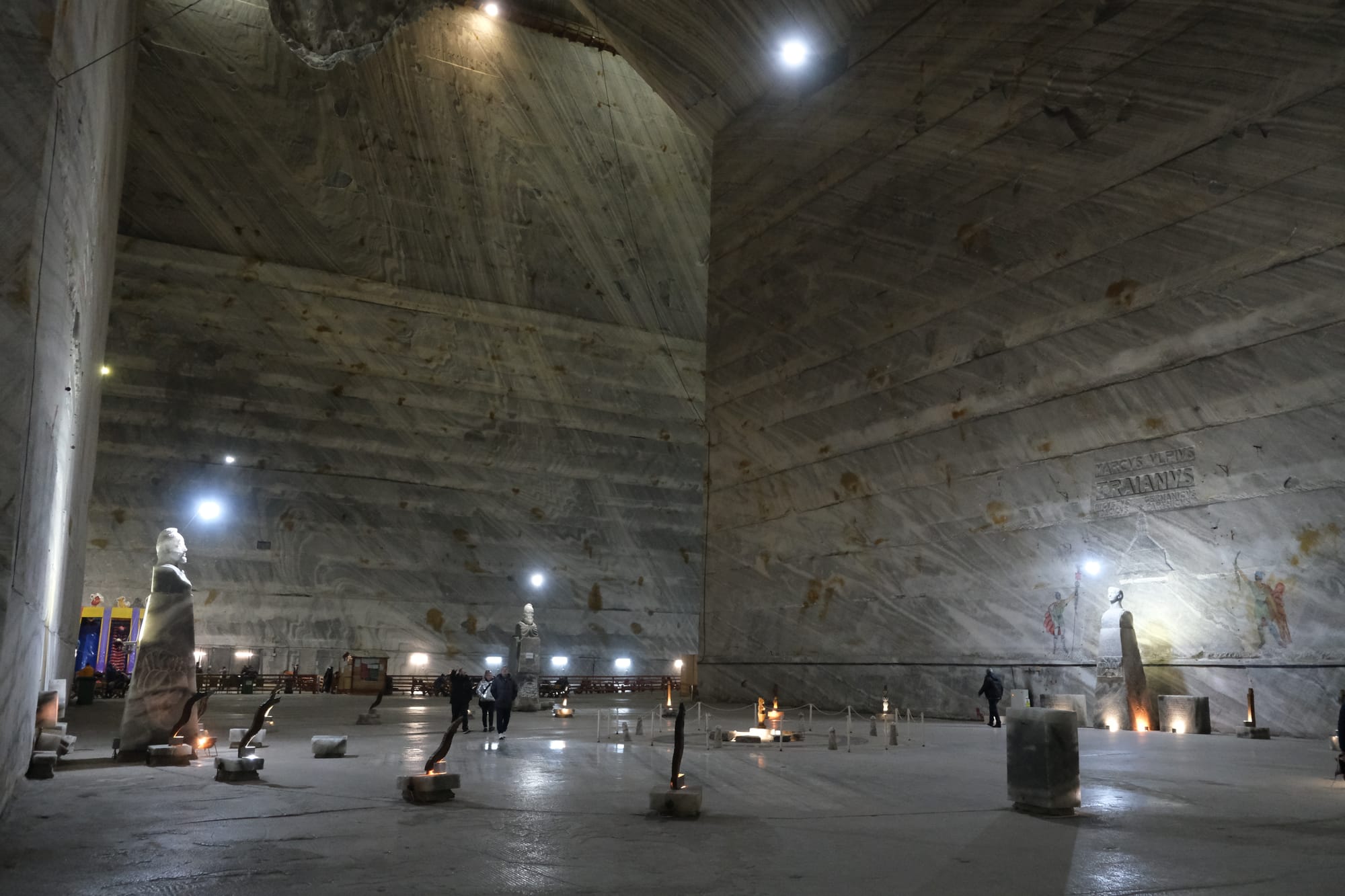
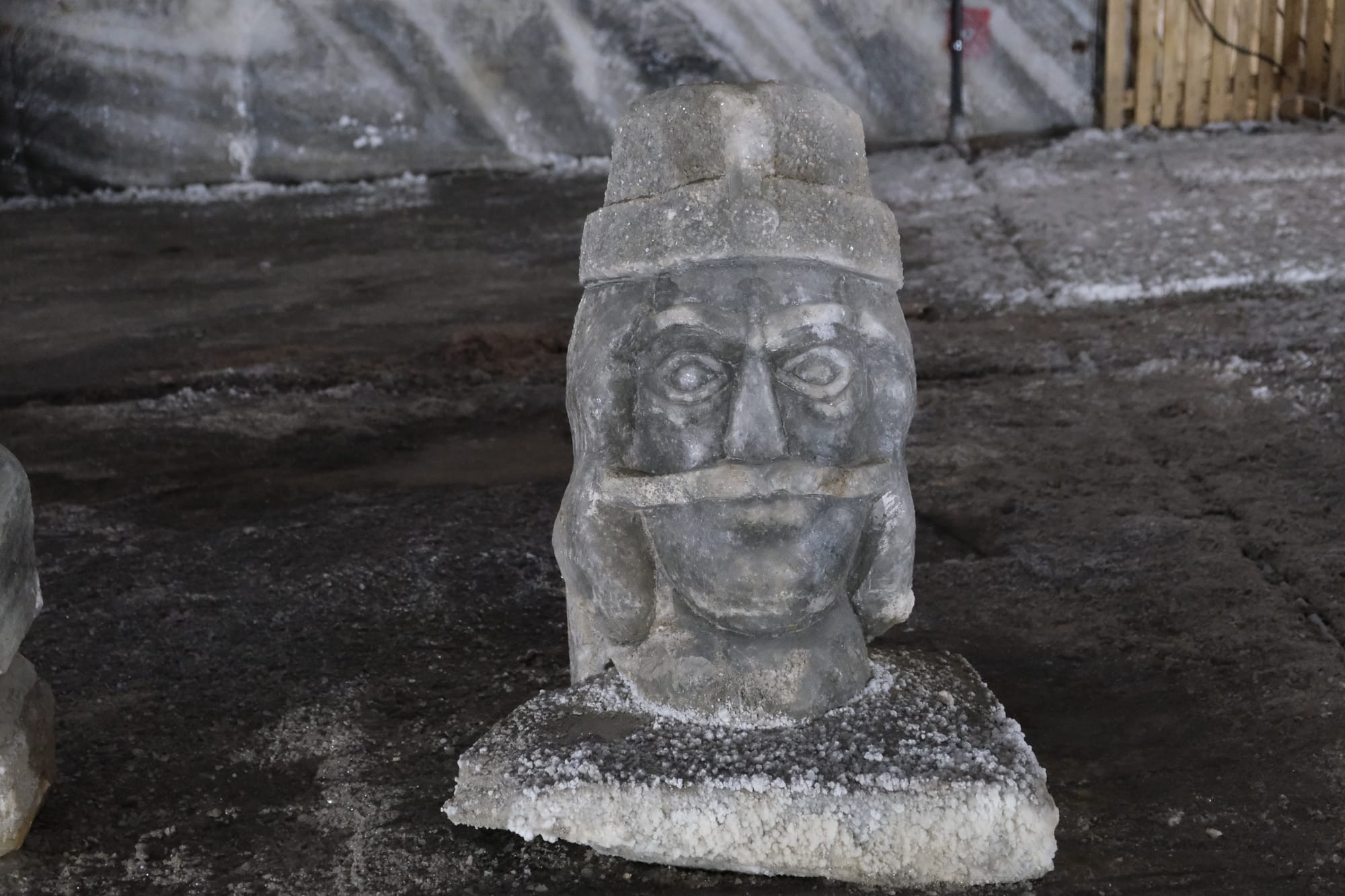

There were also a few salty statues. In one chamber there was a statue of Trajan opposite one of Decebal who I think might have been the Dacian general that opposed Trajan. There was also a salty Vlad "Dracula" Tepes.
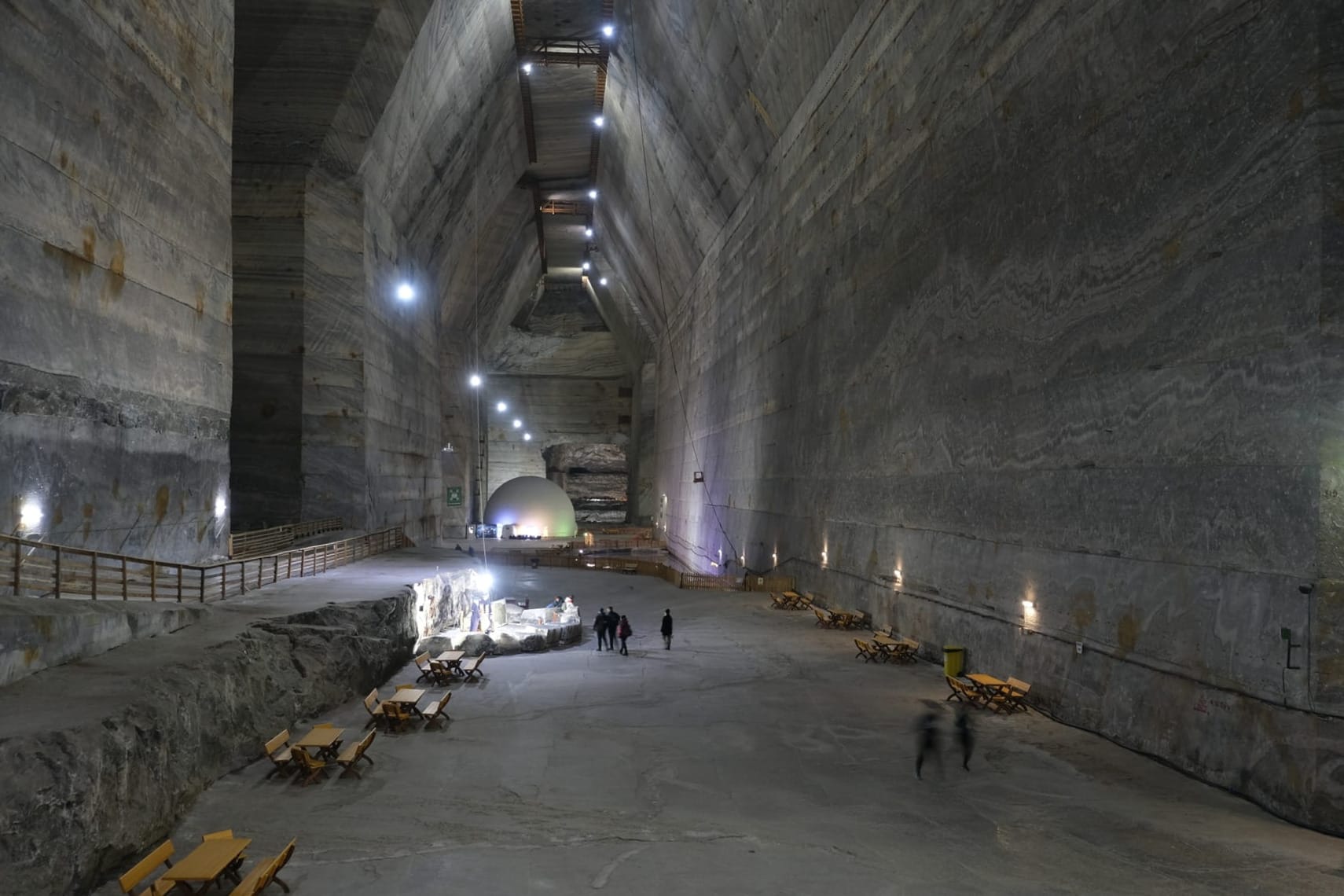
I will finish with this image, another one that I could take with a longer shutter speed. This is the chamber that intersects with the one where the cafe was, at the opposite end to the cafe. I took this picture while on the long ramp leading up to the cafe. (note: the dome at the end of this chamber is a planetarium)
As a final note, the name of this mine is the Unirea salt mine. I only realised at the end that I never actually mentioned the proper name of this particular mine. I believe there is another smaller mine nearby, but I don't think that one is open to the public. Besides, the Unirea mine is the bigger and deeper mine so it gets to be the main attraction.
Thanks for reading – Edward
Written 11th of February 2024
Please comment below if you have any questions or thoughts on any pictures.